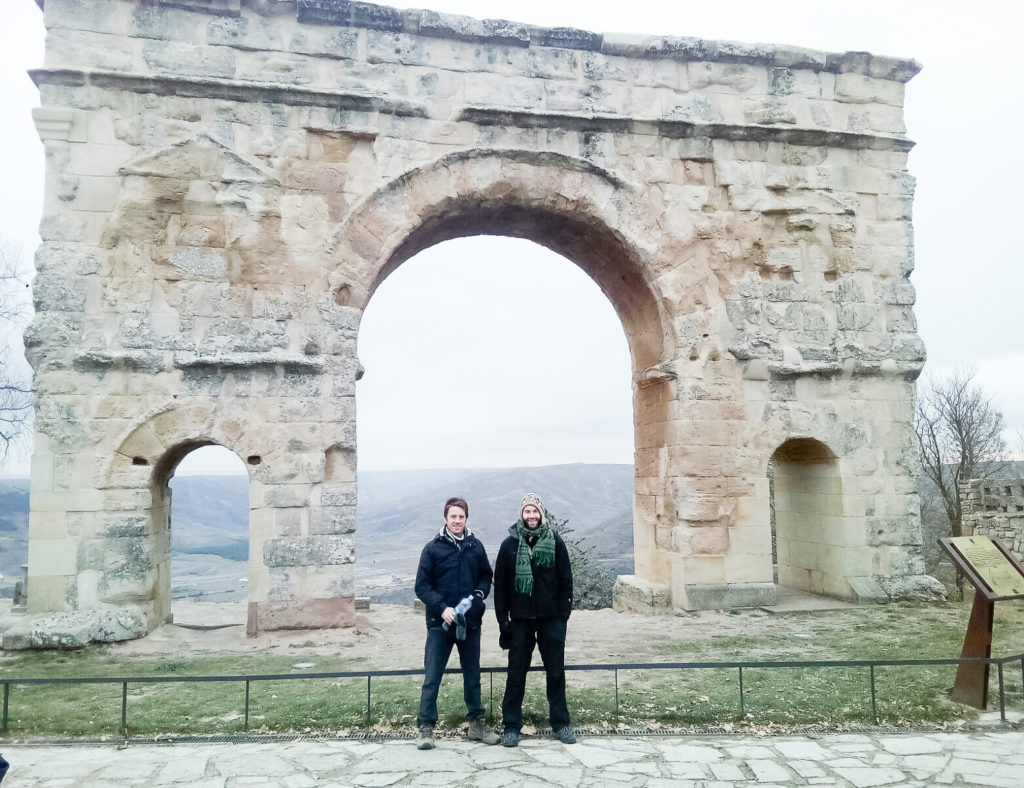After a 15 month absence, I’ve finally decided that it’s time to do some blog posts again. I’ve written a handful of half-finished, unpublished posts about life in Spain; it has proven to be a challenging topic to write about. There are simply too many things to talk about in a single blog post. Instead of an all-encompassing, birds-eye view of my thoughts and experiences of life in Spain, I’ve decided to make a return to blogging by sharing the story of a recent 3 day trip to a previously unknown part of Spain: Soria.
The Plan
I live in Bilbao which is in the autonomous community of País Vasco. Matt lives in Logroño which is in La Rioja, about 90 minutes south of Bilbao. For el puente (the long weekend) we agreed to take a trip together.
Both of us are English teachers, in our early 30’s, have no plans to return to America and are generally enjoying our life here in Spain. I’m the rookie and Matt is the vet. He’s gone full native: he’s been here for 5 years, is married to a lovely Spanish woman and can hablar Castellano de puta madre (speak Spanish really well). I met Matt at the English teacher orientation in Logroño last year.
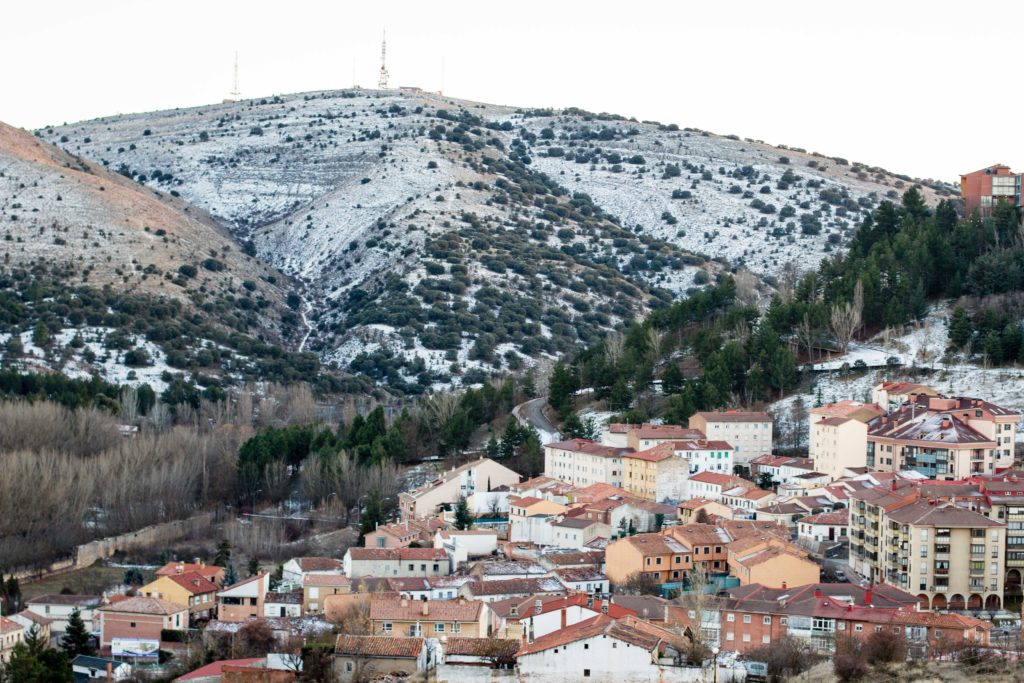
Quick aside on how I know Matt.
In September of 2016, I moved to Logroño, the capital city of the region of La Rioja with a population of 100,000. I chose Logroño because I wanted to experience ‘authentic’ Spain where people speak Castellano puro (pure, unaccented, clear Spanish). I wanted to live in a bustling city but not a massive international metropolis like Madrid or Barcelona that would be crawling with Americans and other English speakers. I read a few blogs about Logroño and I was sold on it.
During the first week of my arrival, there was an orientation for English teachers in the program. I was hellbent on not befriending any Americans. I didn’t move to Spain to get to know boring Americans; I wanted to immerse myself in the culture and language and only hang out with Spaniards. During the orientation, I couldn’t help the smug feeling of observing all the other baby-faced participants and scornfully casting judgment on the rest of my peers who I assumed would be desperately forming cliques in order to recreate their college experience. The majority of people in the program are fresh-faced recent college grads – although there are a sizeable population 30-somethings like myself who were burnt out from the rat race career of their 20’s and wanted a change. After the orientation ended, we had to fill out some paperwork and Matt happened to be nearby. I asked him a question about the form and when I found out that he was going on his 4th year in the program and was a fellow ‘old guy’ in his 30’s, I knew I had to be friends with him. If anything, this veteran expat could impart some words of wisdom onto a rookie getting a late start in the game. Fast forward several months and we had become fast friends, meeting regularly to vent about the frustrations of being an English teacher but also reaffirm how awesome it was to not be living in the boring suburbs of America, working in a cubicle, watching the clock run down on our lives and working furiously to pay off our debts.
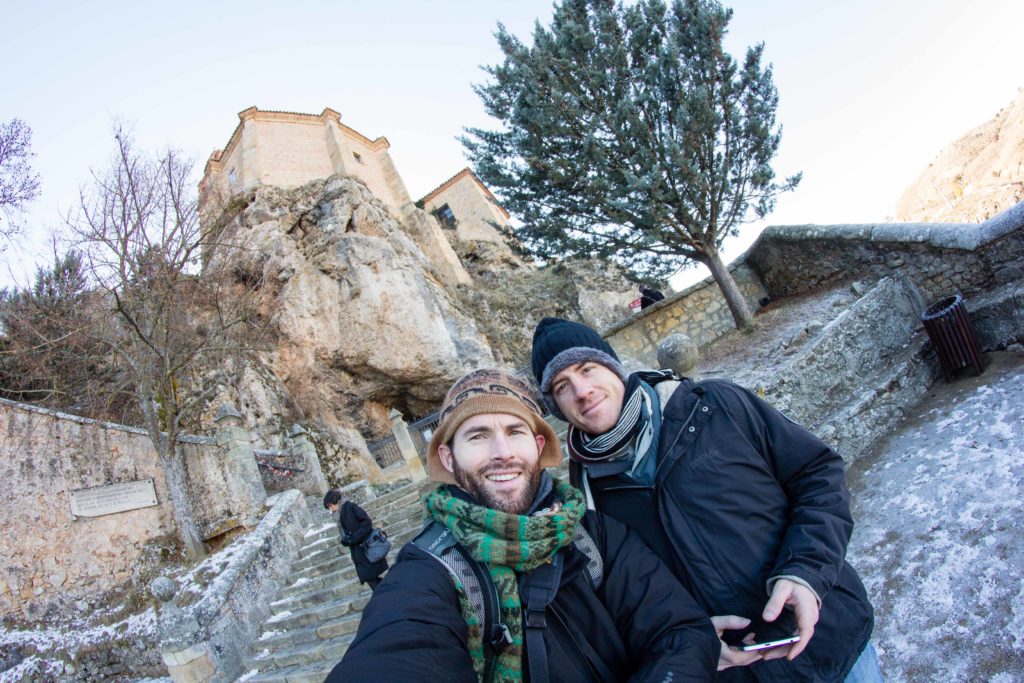
Back to present day.
We both decided we needed a vacation for the upcoming long weekend, but neither of us wanted to go abroad. There were many ideas thrown around in the weeks leading up to the trip. El Camino de Santiago Norte? Too rainy and no hostels are open. Segovia? Matt has friends there but the lodging prices were through the roof due to the long weekend. In a final act of desperation, I created 4 public Couchsurfing trips in various cities throughout Spain, with the hope that a kind soul would host us for the weekend. Nada. I was about to throw in the towel and suggest that Matt come to Bilbao and we could day trip around there, when I received a text from Matt telling me he had unilaterally decided we were going to explore some random pueblos in the province of Soria located in the community of Castilla y León. Random pueblos in no-man’s-land Spain? Sounded like an adventure to me. I was in.
Up until this point, I had only been to the city of Soria once: on the way to Logroño from Madrid on my 4th day in the country. It was a rainy day and the bus station and surrounding buildings were ugly and devoid of personality (which I later realized was the standard building style here in Spain and they really aren’t that bad; functional housing). I never thought Soria was much more than a transit point between more interesting places in Spain. Boy, was I wrong.
The plan was to spend one night in the city of Soria and then the next two nights in various pueblos in the surrounding province.
The plan was loose. We had 3 nights of lodging booked.
- Soria: the capital city of the province with the same name.
- Barahona: a forgotten pueblo of about 50 people which is a day hike to Rello, an ancient pueblo (with even fewer people than Barahona) that served as a defensive center for the invading Arabs over 1,000 years ago.
- Marazovel – We weren’t staying here, but planned to pass through it on the way from Baraona and Rello. A blip on the map, a forgotten collection of buildings and ancient roads.
- Medinaceli: a slightly larger pueblo with heaps of history and Roman ruins.
There were buses from Soria to Barahona and the rest of the time we would be day hiking or hiking with our bags between destinations. The plan was sobre la marcha (make it up as you go along). The details were hazy. Were there stores in any of those pueblos? Mobile coverage? Humans? Ni idea. There were many unknowns. This is what we were looking for; getting so far off the beaten path that it remains a speck in the distance. Immerse ourselves in the culture. Get to know ‘true’ Spain. Tunnel deep into the unknown corners of the culture.
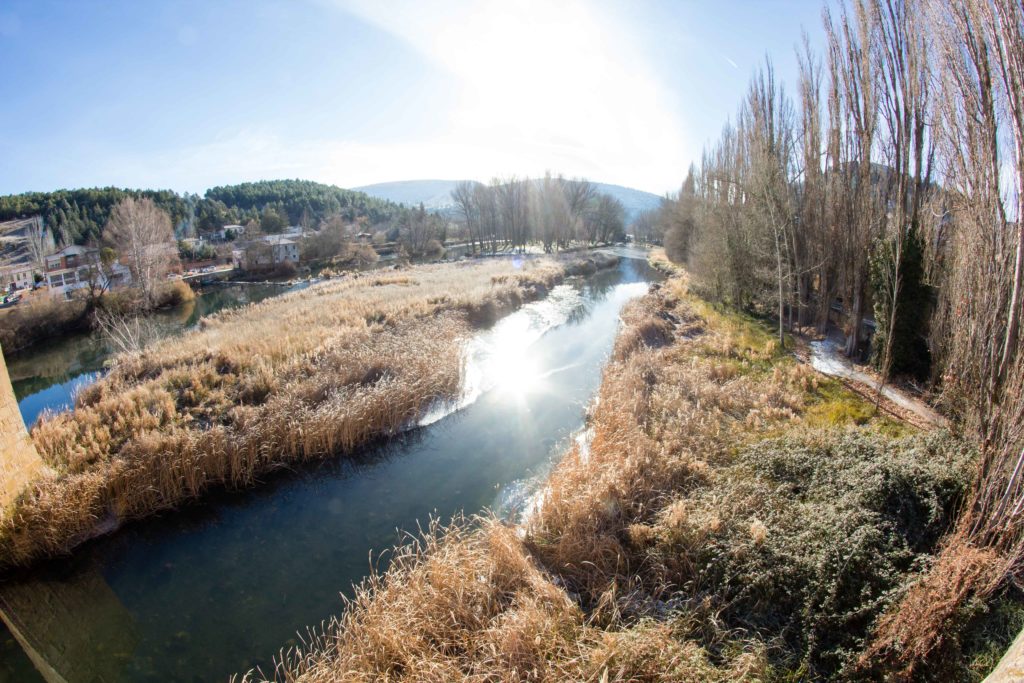
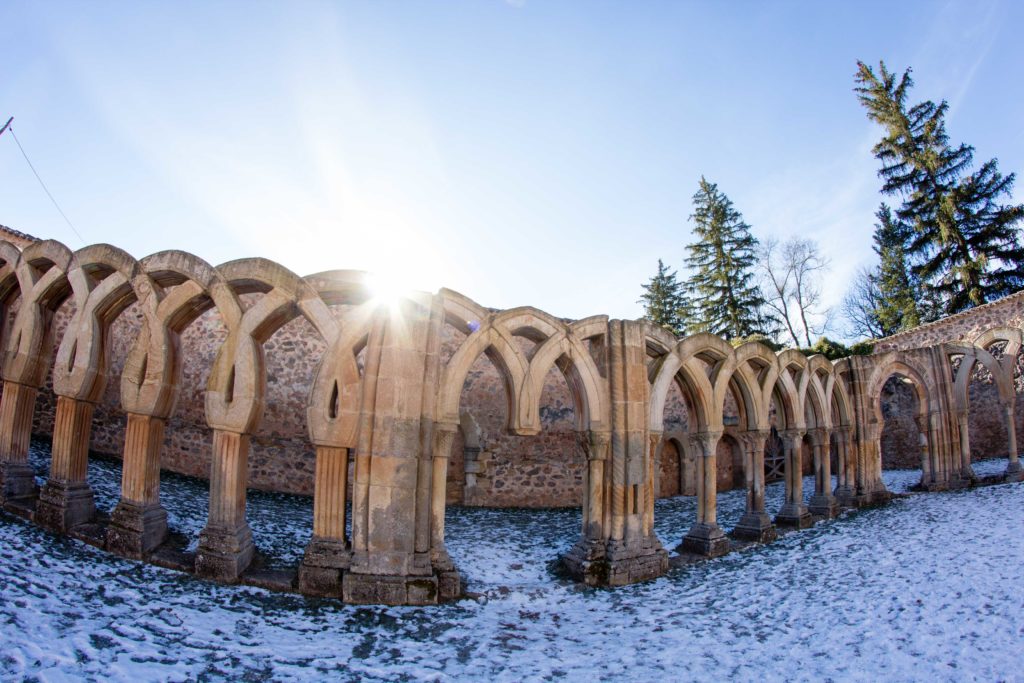
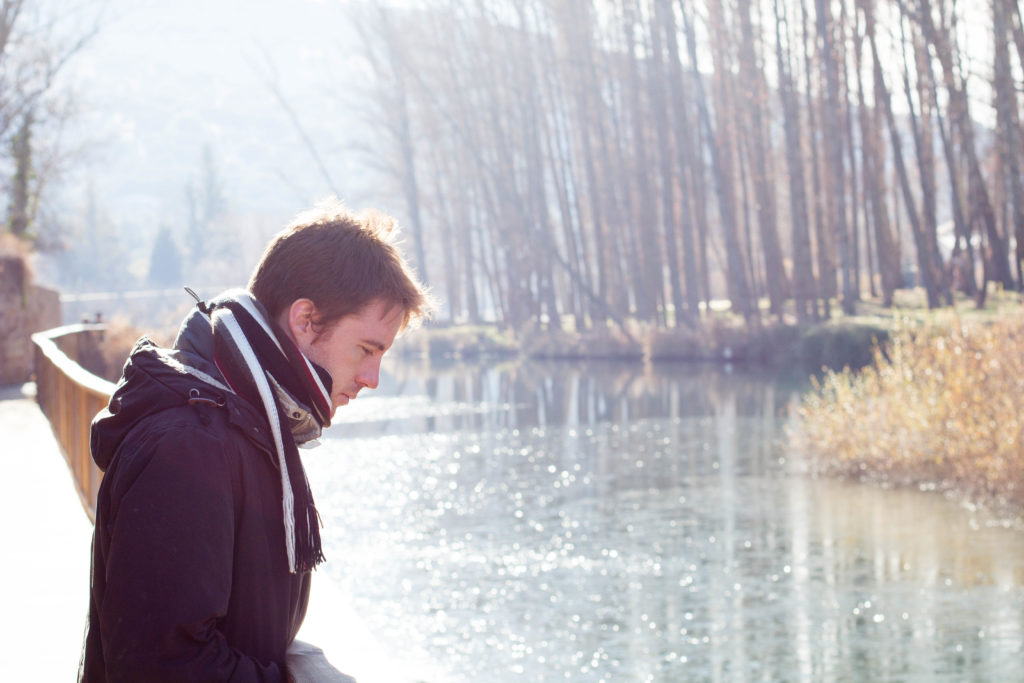
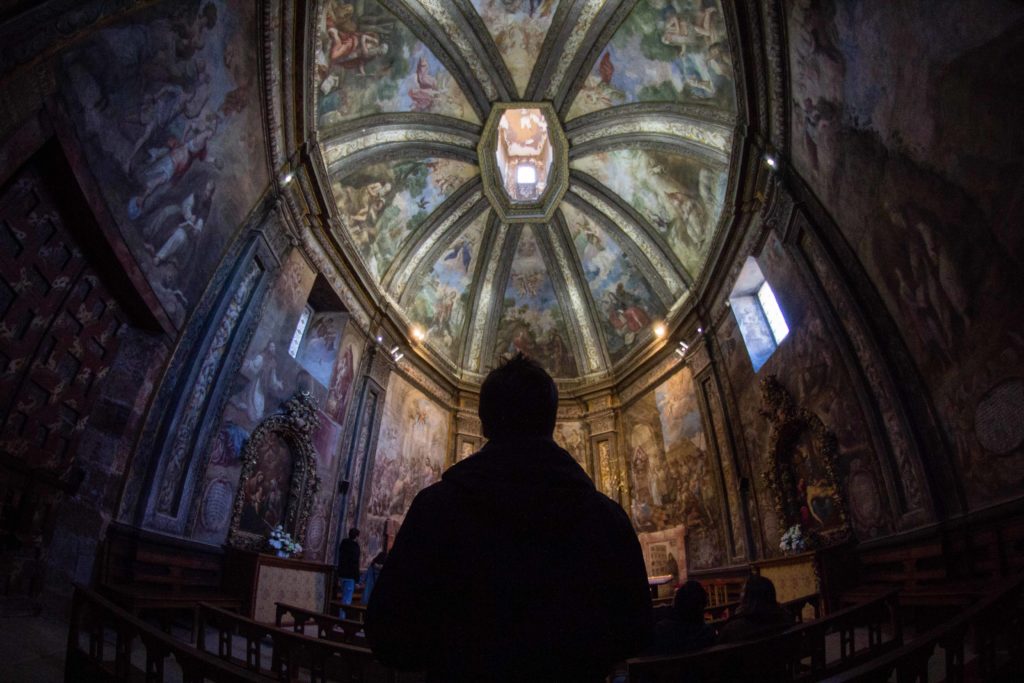
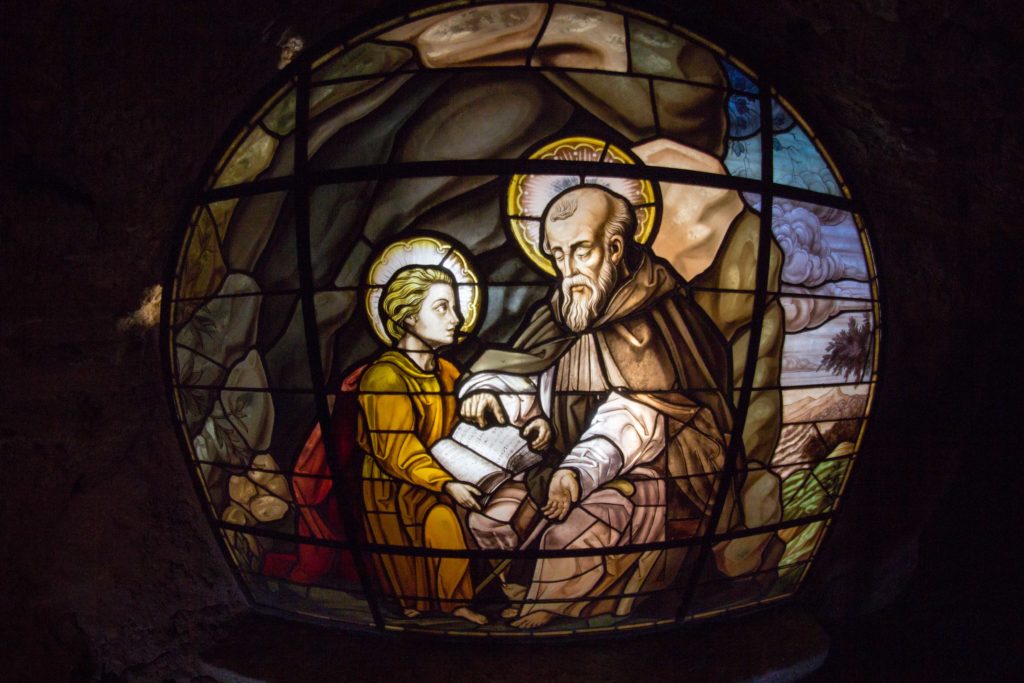
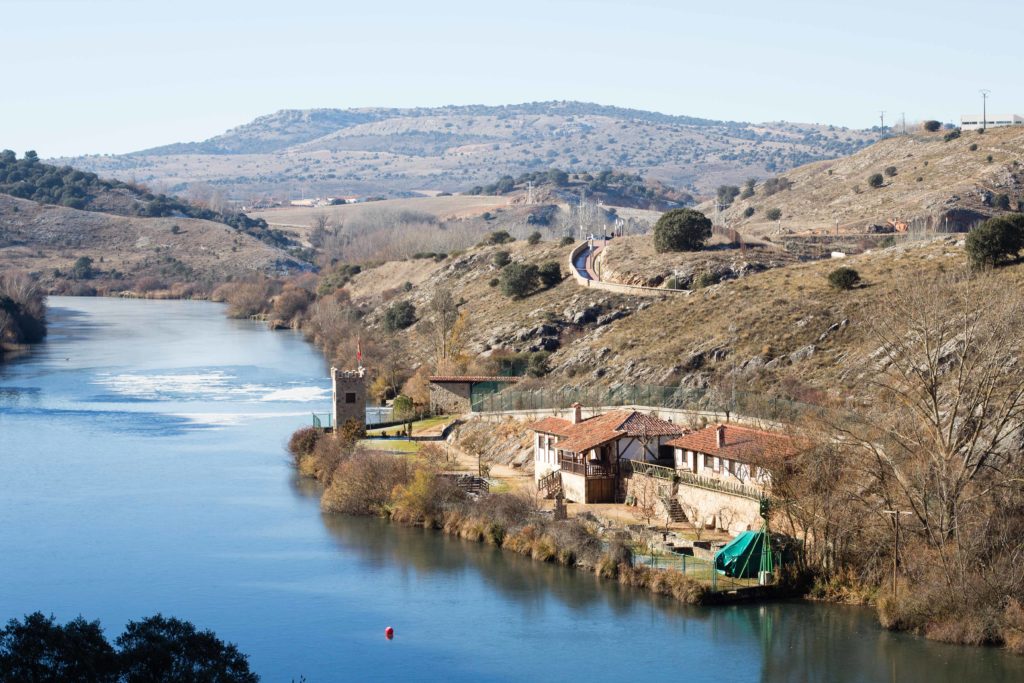
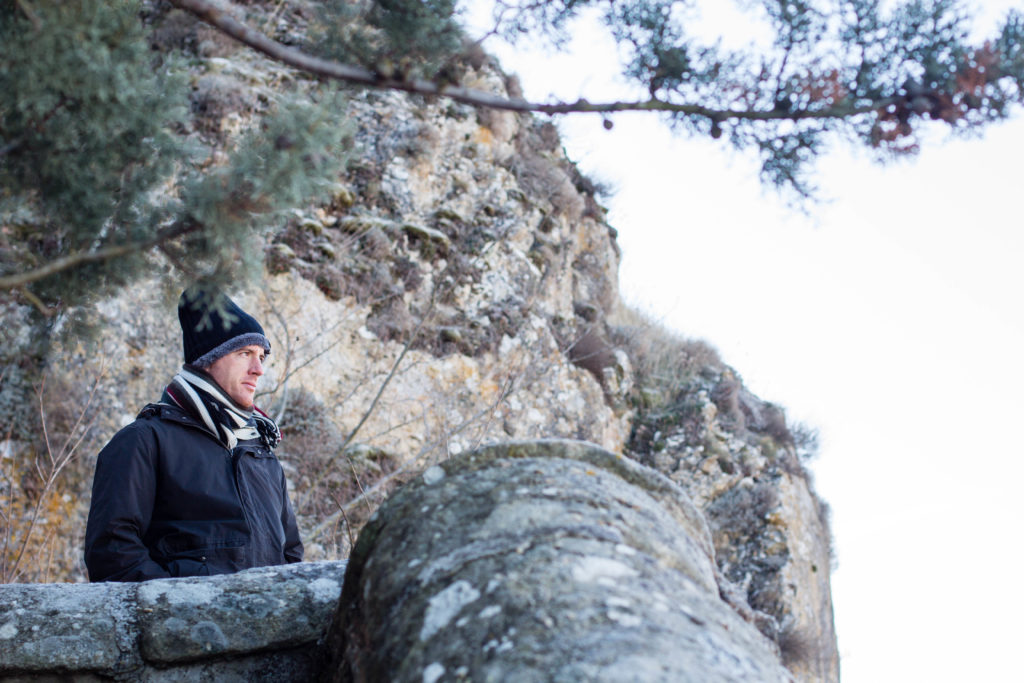
Soria
Soria was a pleasant city with a beautiful old town, stunning riverside area and a 1,000-year-old Ermita (small church) nestled into the rocks above the river. I was struck with how many Spanish flags I saw hanging outside apartment buildings. Here in Euskadi (País Vasco), the people don’t support Spain. Many people don’t even consider themselves Spanish (they’re Basque). You see tons of Basque flags and lately, lots of flags of Cataluña – the people here support their quest for independence – it’s a fight that the Basques are very familiar with. Anyway, in Soria, there were Spanish flags everywhere. It’s the patriotic part of the country; the deep south or Midwest of the U.S.A. “AMERICA!” VIVA España! It was very interesting to see the radical changes that occur when you drive 3 hours south. The landscape of Soria is also completely different from the verdant and wild mountains of País Vasco. Soria has a high desert climate; I believe it’s around 1,000 meters of elevation, located on a vast meseta (or plain). The vegetation is sparse, the earth is sun baked and comprised of clay, snow blankets the ground and it is freezing.
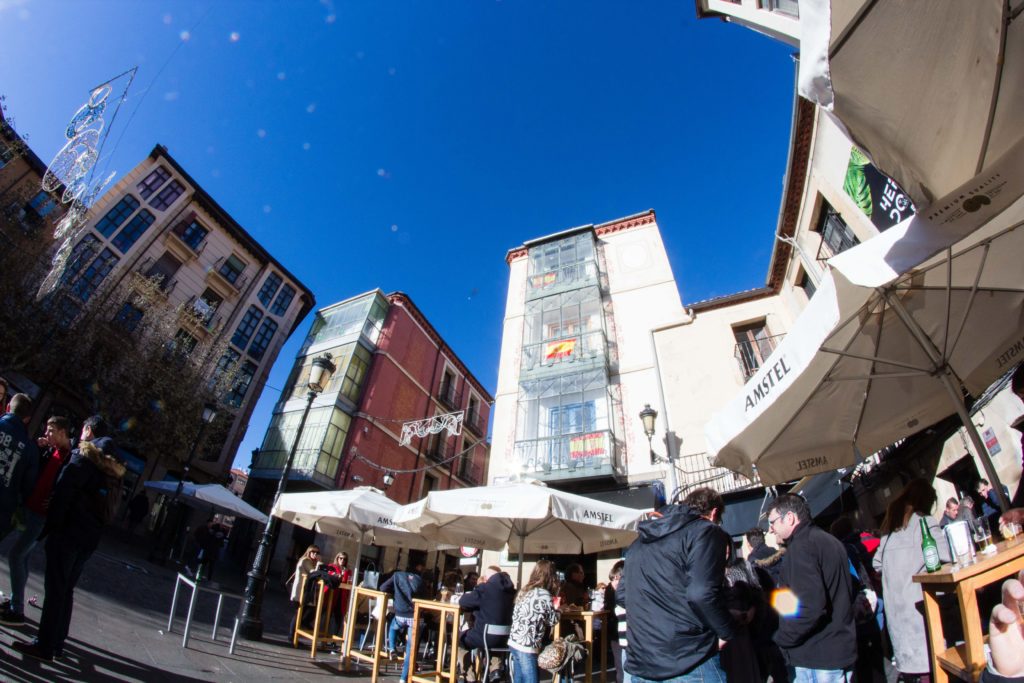
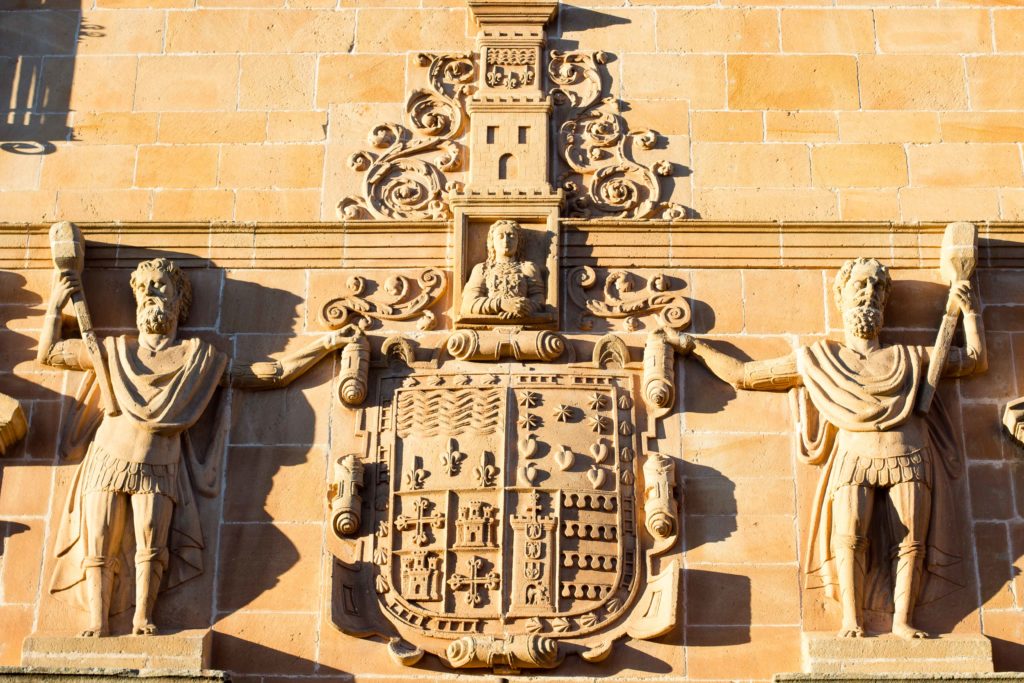
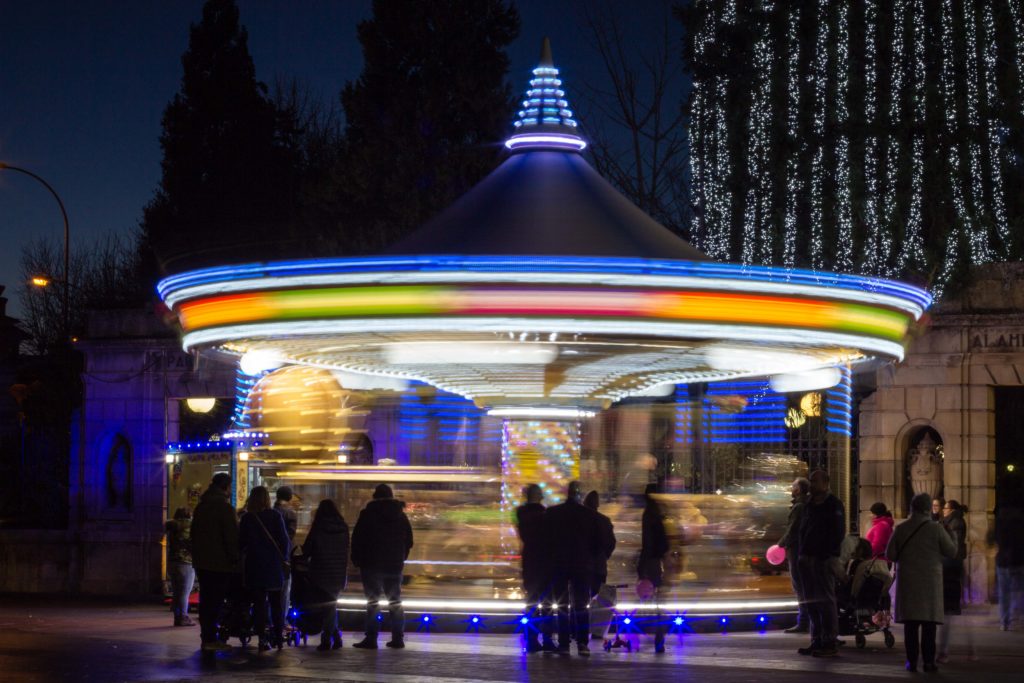
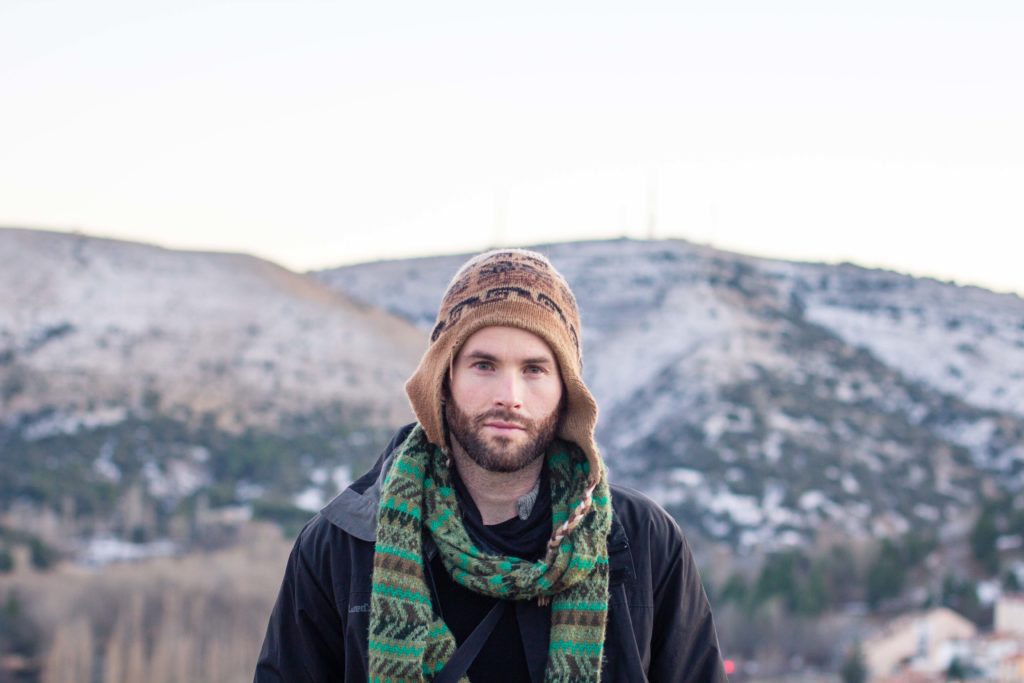
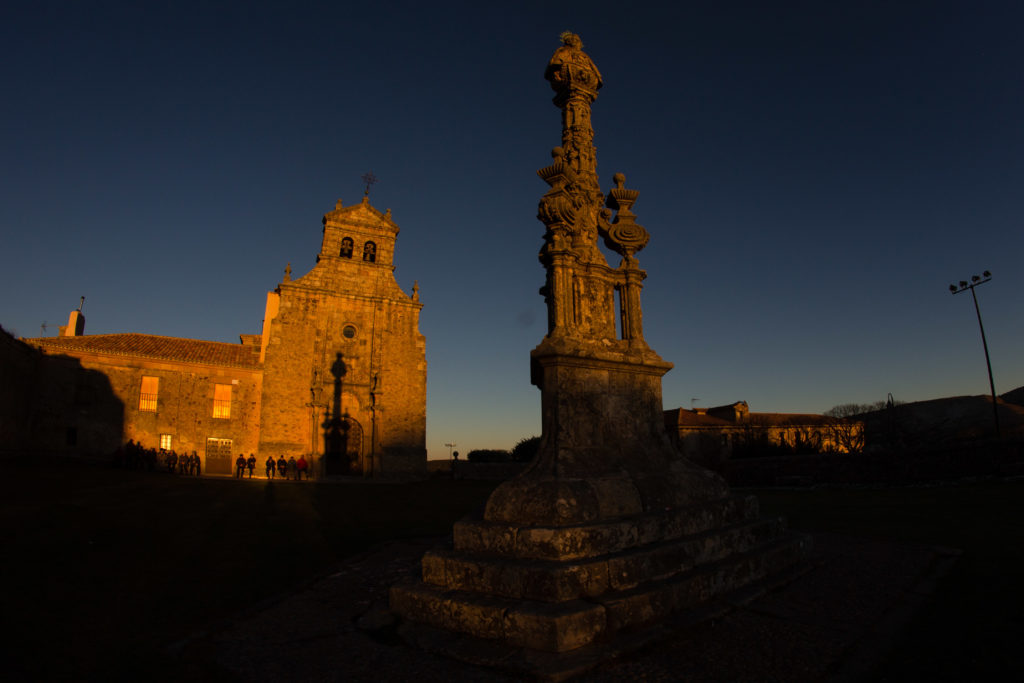
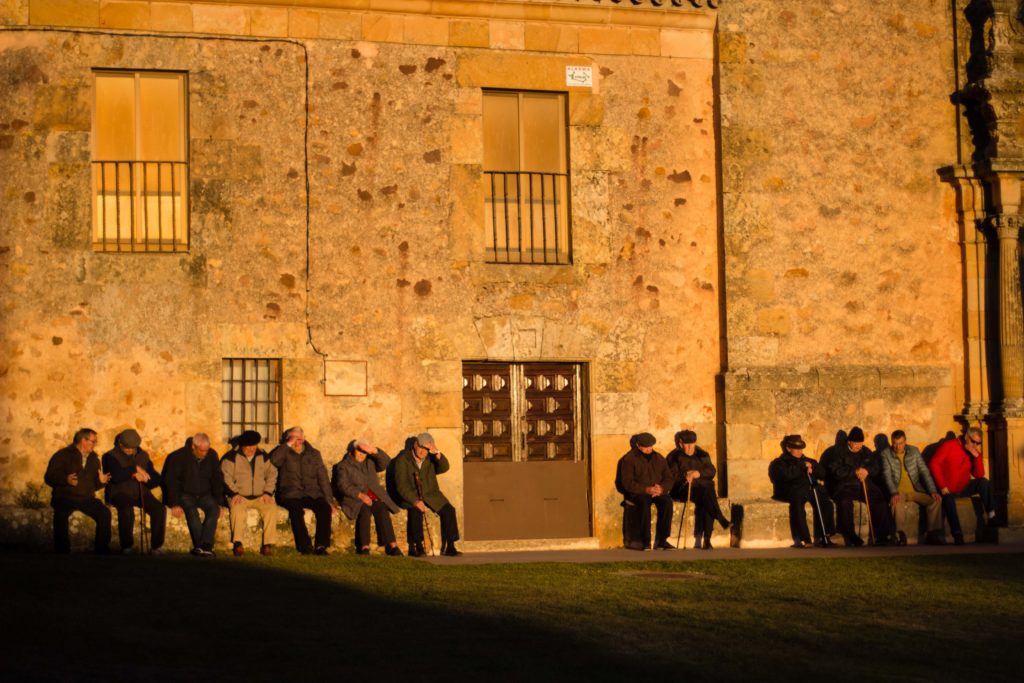
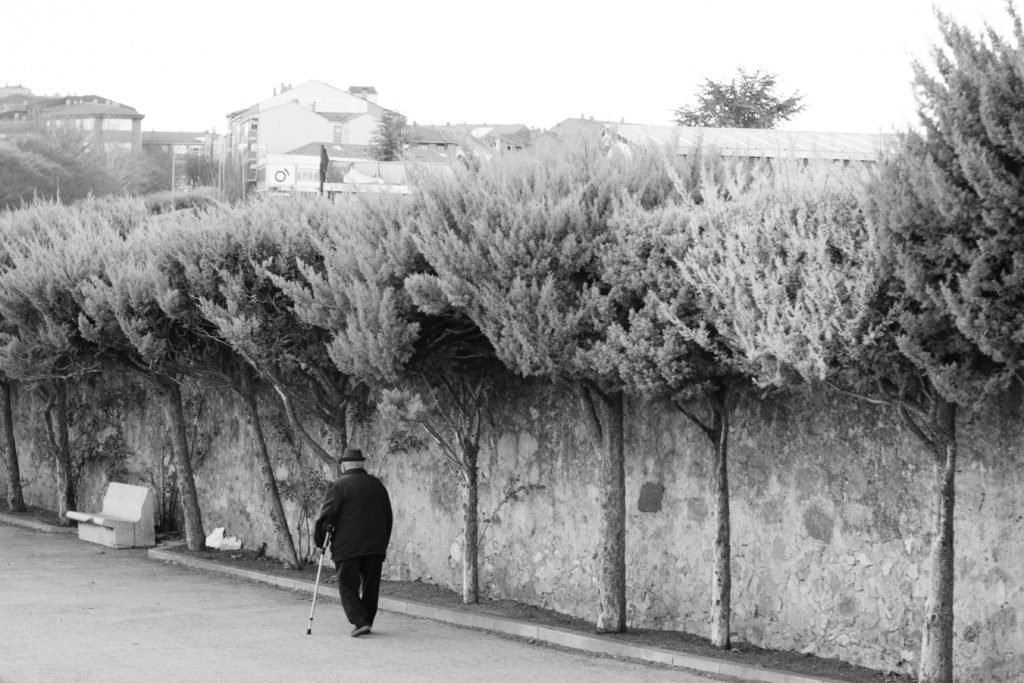
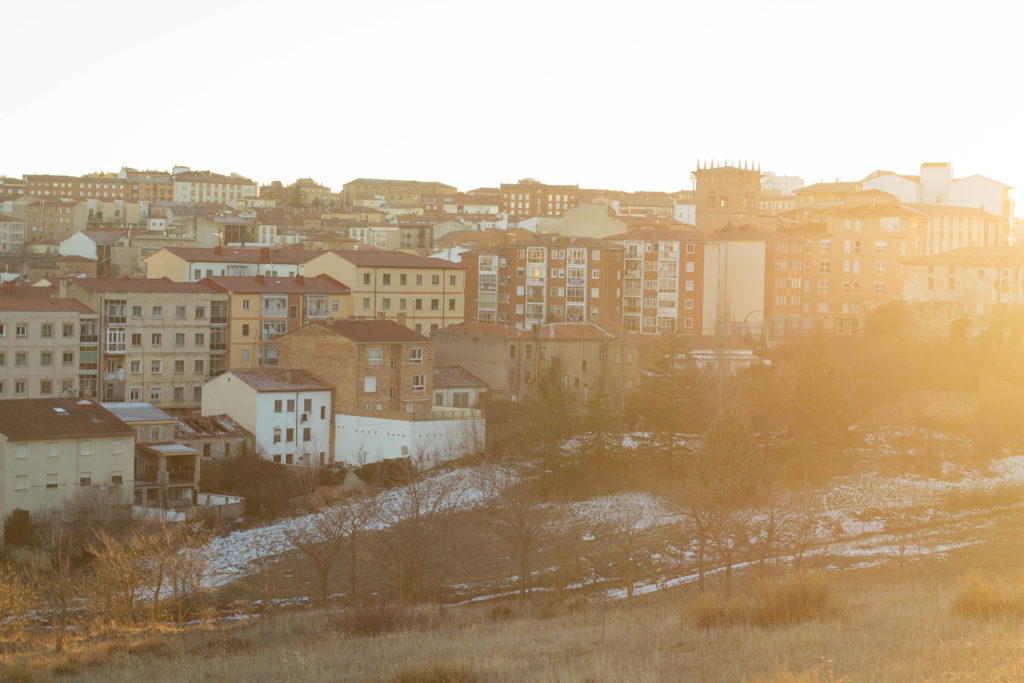
Barahona: The Arrival
On day 2 we made our way to the bus station and grabbed the only bus to Baraona. There were only two other people on the bus who got off at the stop before ours. We arrived at Barahona tired, hungry and slightly hungover. Bags in hand, we walked through the pueblo searching in vain for our hostel. Not only was nothing open, but there was no one in sight.
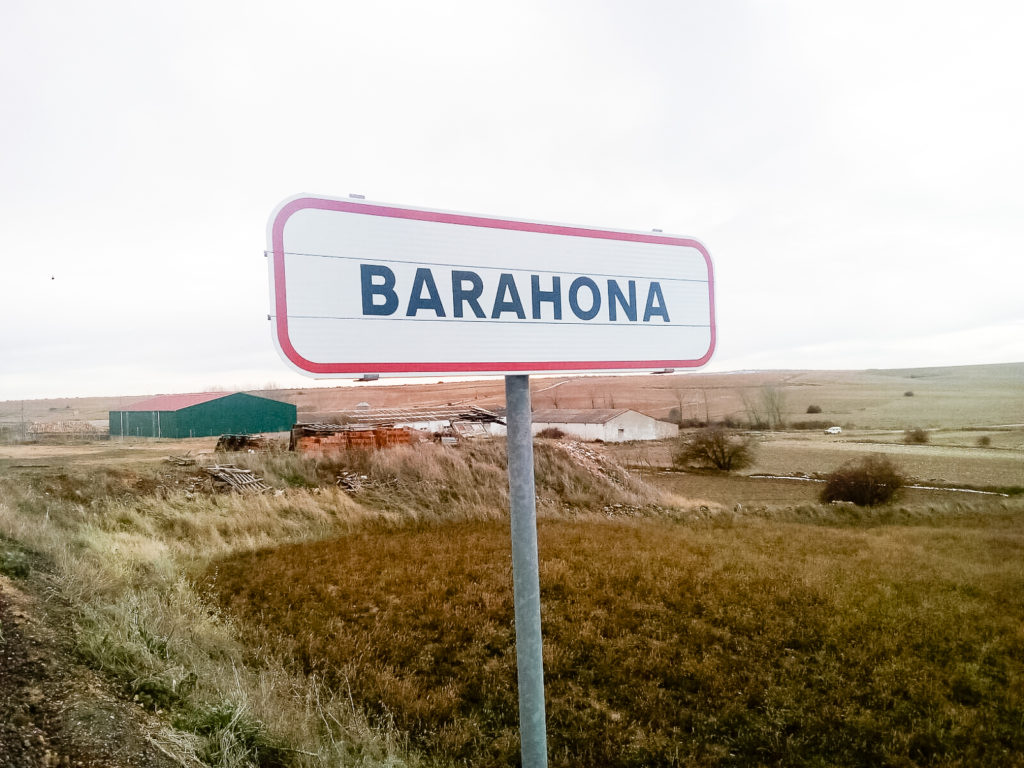
There were no people, no stores, no bars. There were only extremely old buildings, narrow streets and of course a church. Our food rations were low and we had a 24 km hike planned – we had only eaten the traditional Spanish breakfast of a piece of toast, a cup of orange juice and a cafe con leche. Lacking any protein or substance, a typical Spanish breakfast only buys me about an hour before an unbelievable hunger overpowers me and I need some substantial food before entering the ‘hangry’ red zone of starvation where I am extremely cranky and irritable.
We finally found our hostel by the entrance to the pueblo and entered into the simple bar. We checked in, ate a power lunch of pork, fries and eggs and departed for our journey to Rello, an ancient pueblo 12 km away from where we were staying.
There were no stores in town and the only bar in Rello is closed during the winter; so we stocked up on the only snacks available in the bar: pork rinds and whole peanuts. I had an emergency supply of almonds and chocolate, so we figured we’d be good for the day until dinner time at around 8:30.
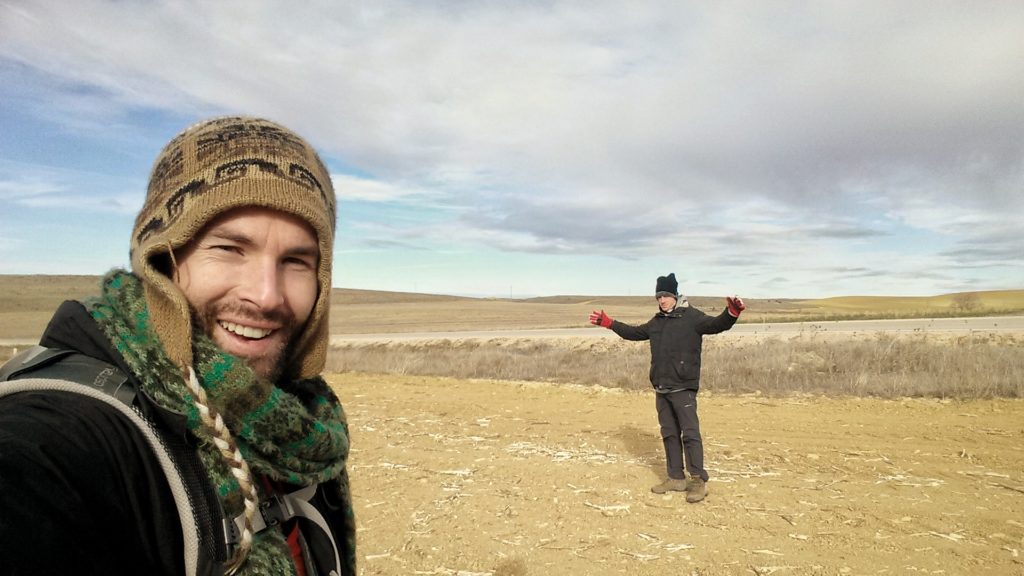
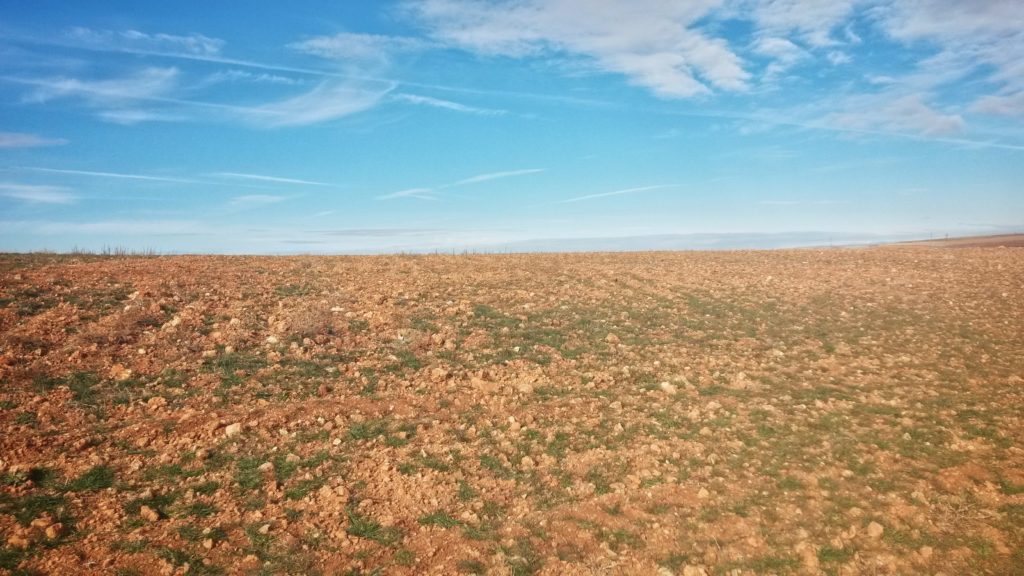
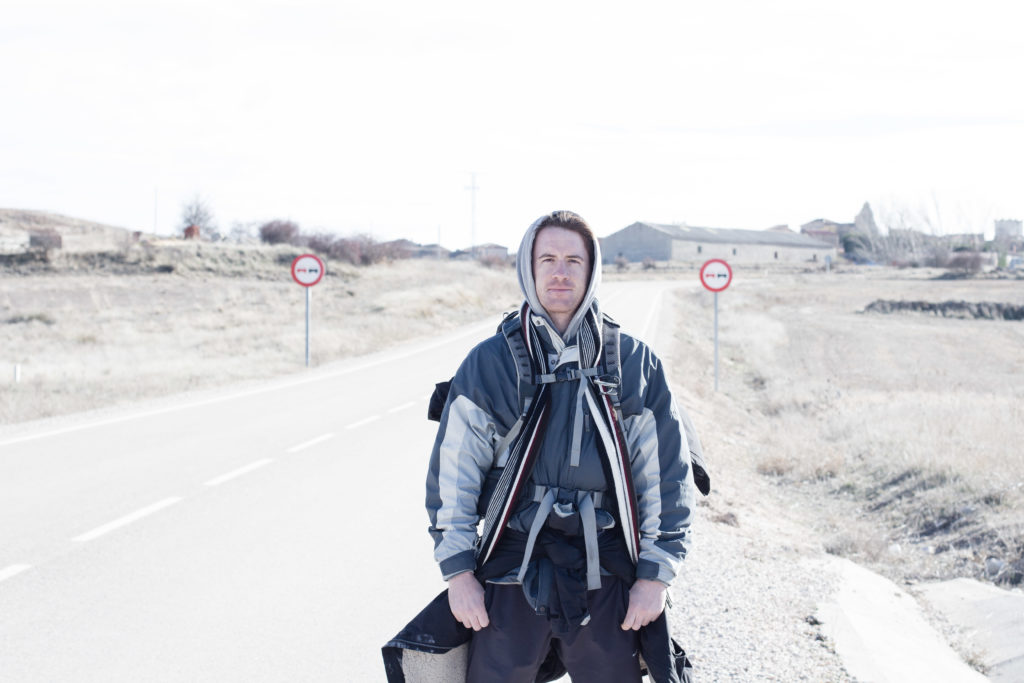
El Camino
Rello was 12 km away and although there were loosely marked trails, we decided to follow the road to avoid getting lost. During the course of our 2-hour walk, we saw about 4 cars pass by. There was no one around. If we stopped walking, all we heard were the wind and the birds. The landscape was barren, dry and vast. There were some rolling hills but it was generally very flat. A stark contrast from the rugged and green mountains of País Vasco that I’m used to. It reminded me of being in The Black Rock Desert during burning man; obviously not as flat and vast but the same idea. The horizon extended forever and the distances were massive. We later found out that from Barahona, you can see the lights of Madrid in one direction and a distant mountain range in another direction. The horizon sprawled for over 100km of dry ocean land. The earth had a beautiful red and orange hue to it. The silence and tranquility were refreshing. We were in no-mans-land Spain. Our only company was birds and barren fields of crops that had yet to sprout from the ground.
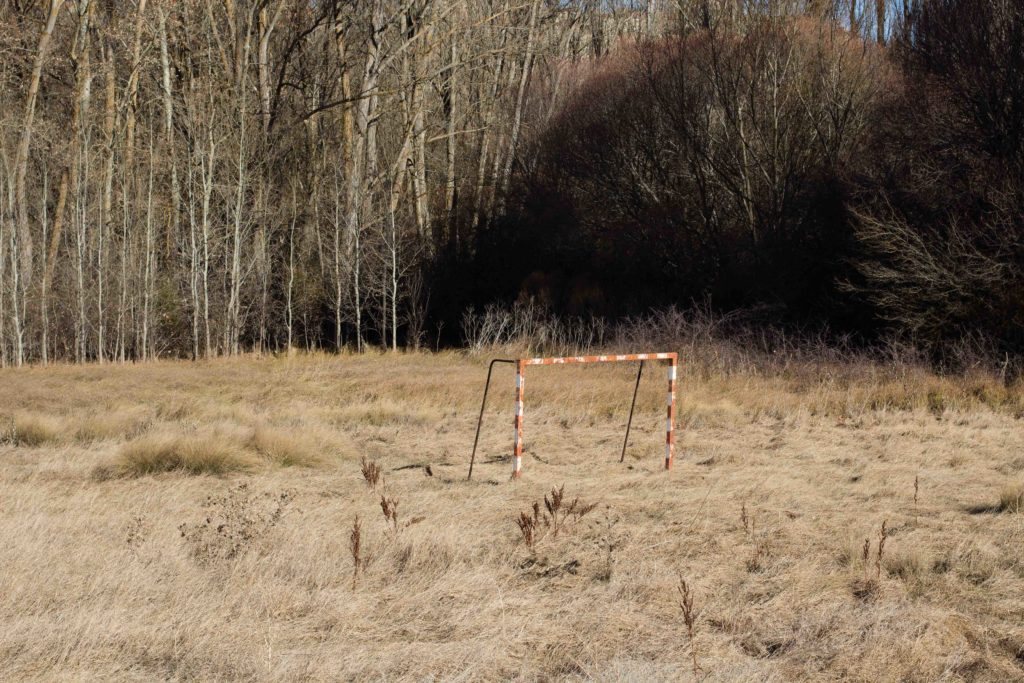
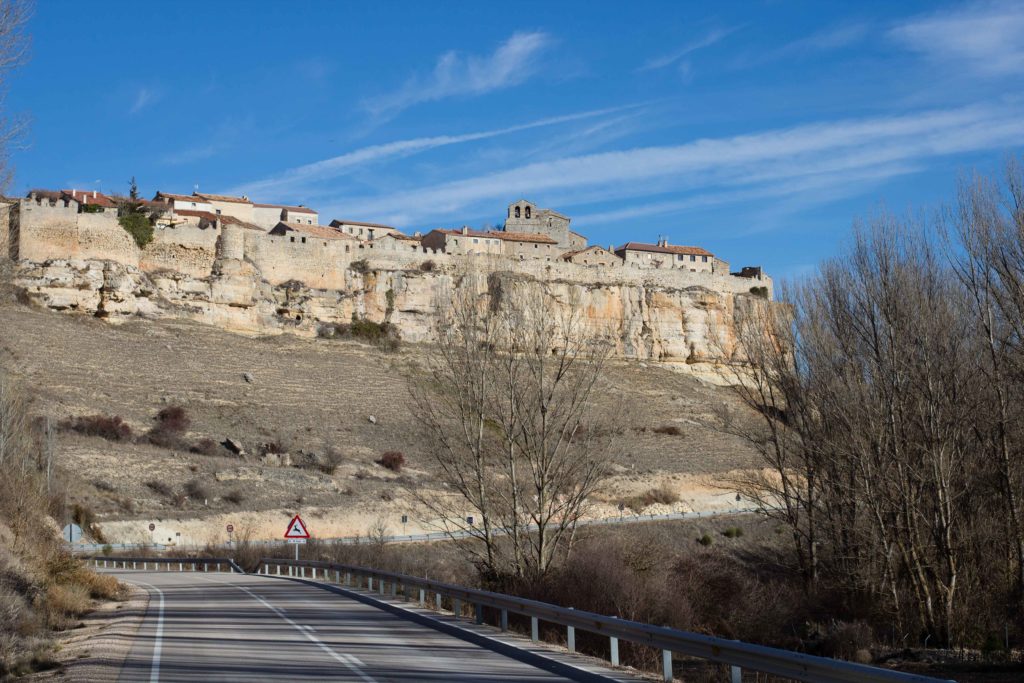
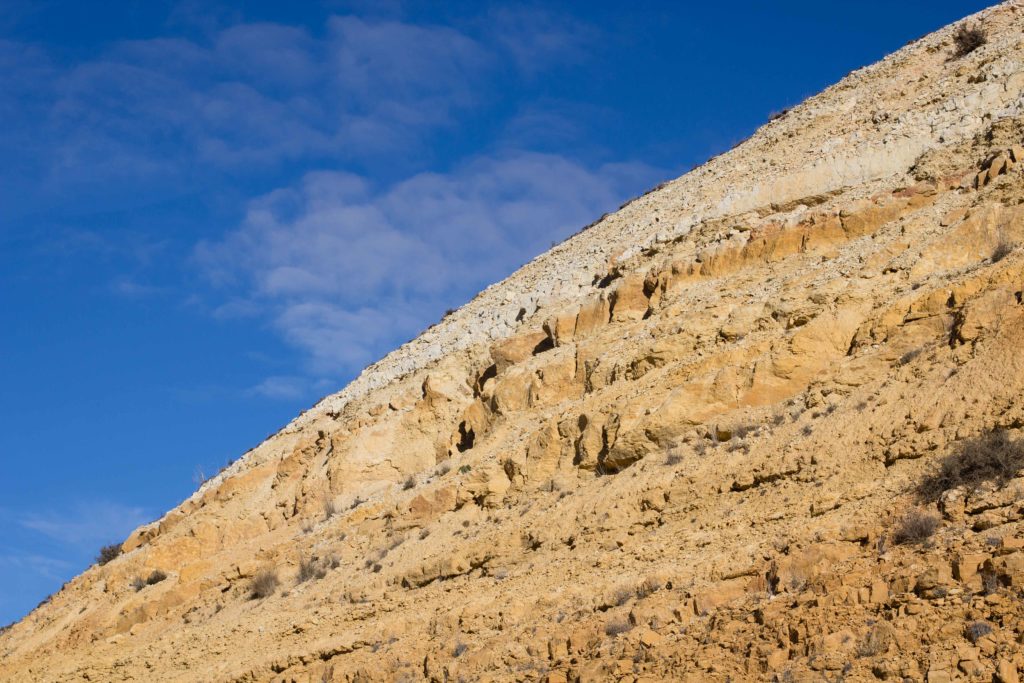
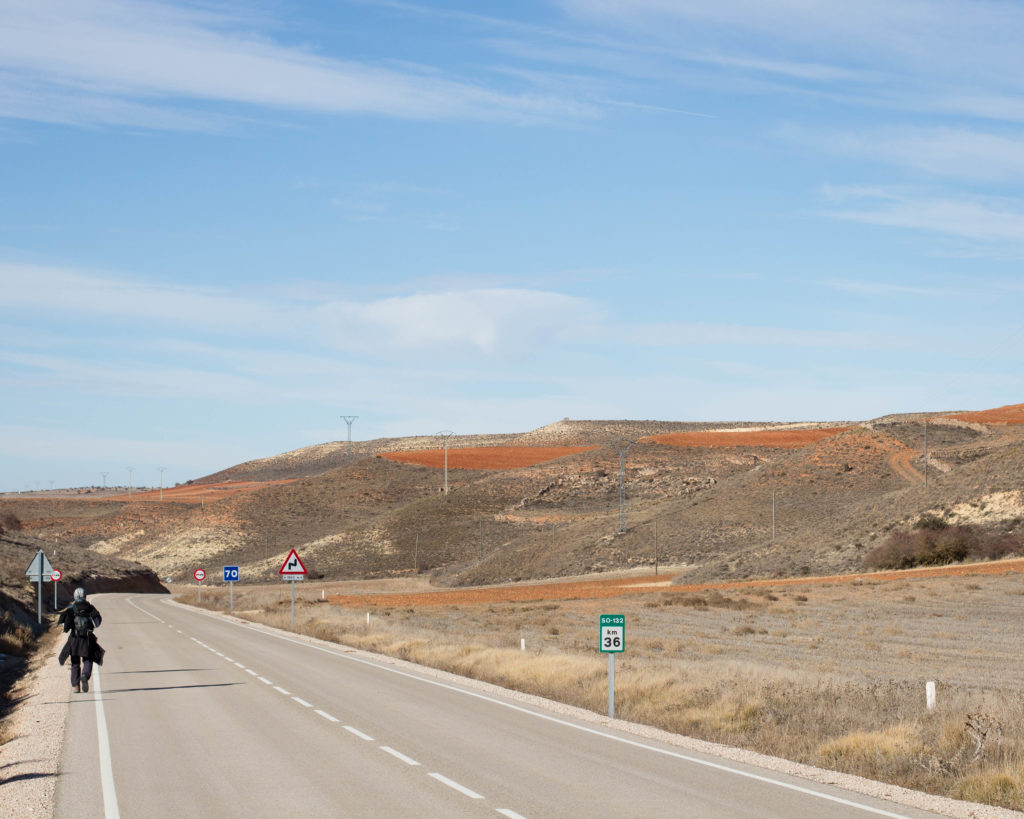
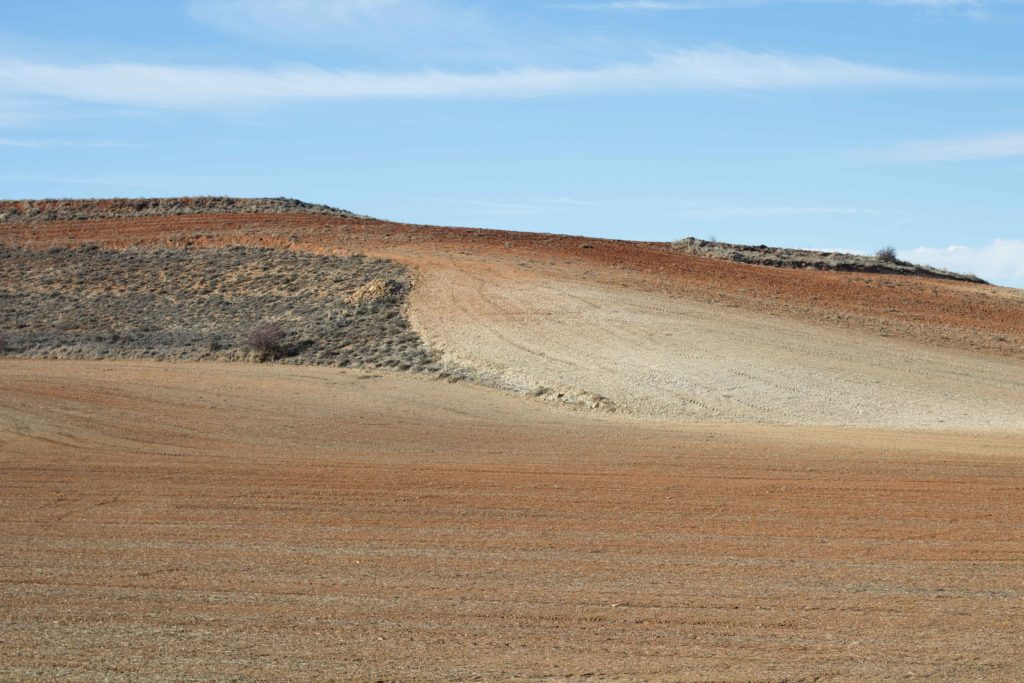
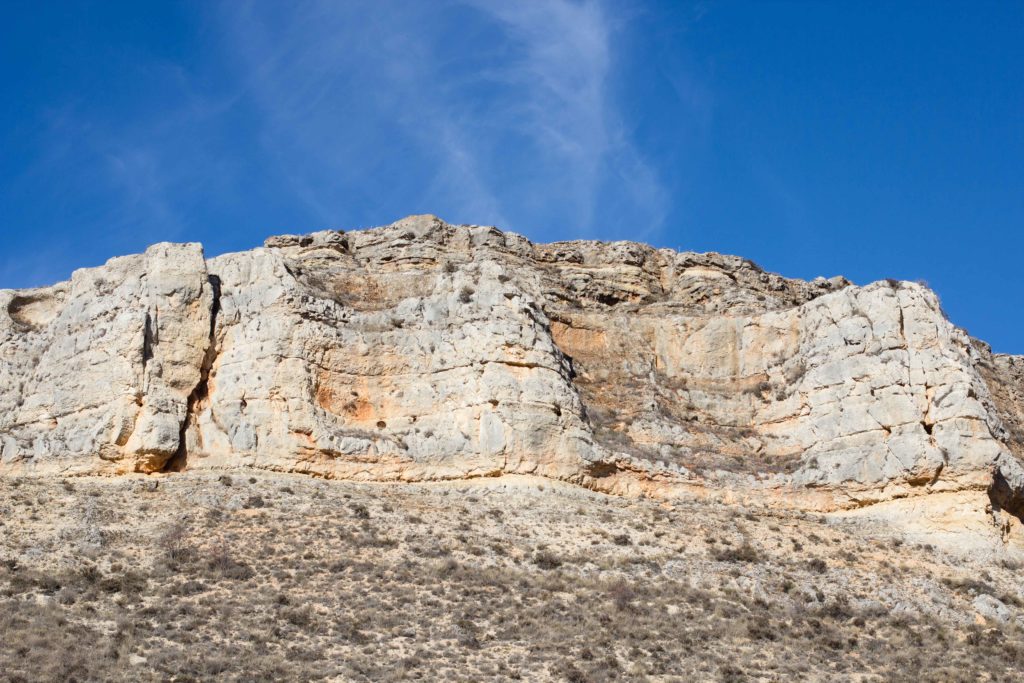
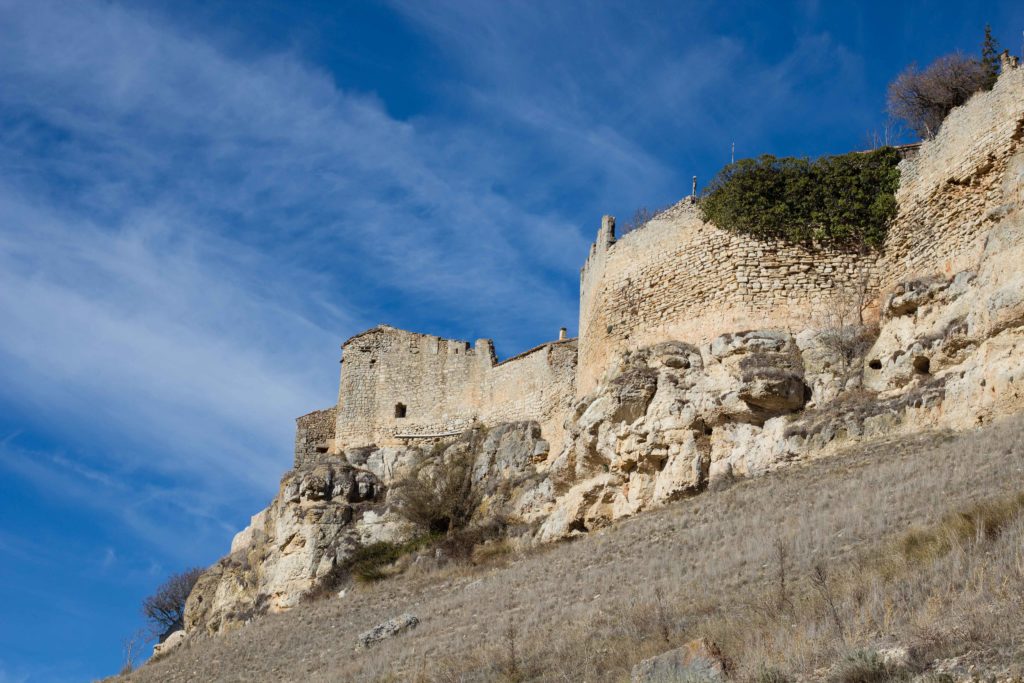
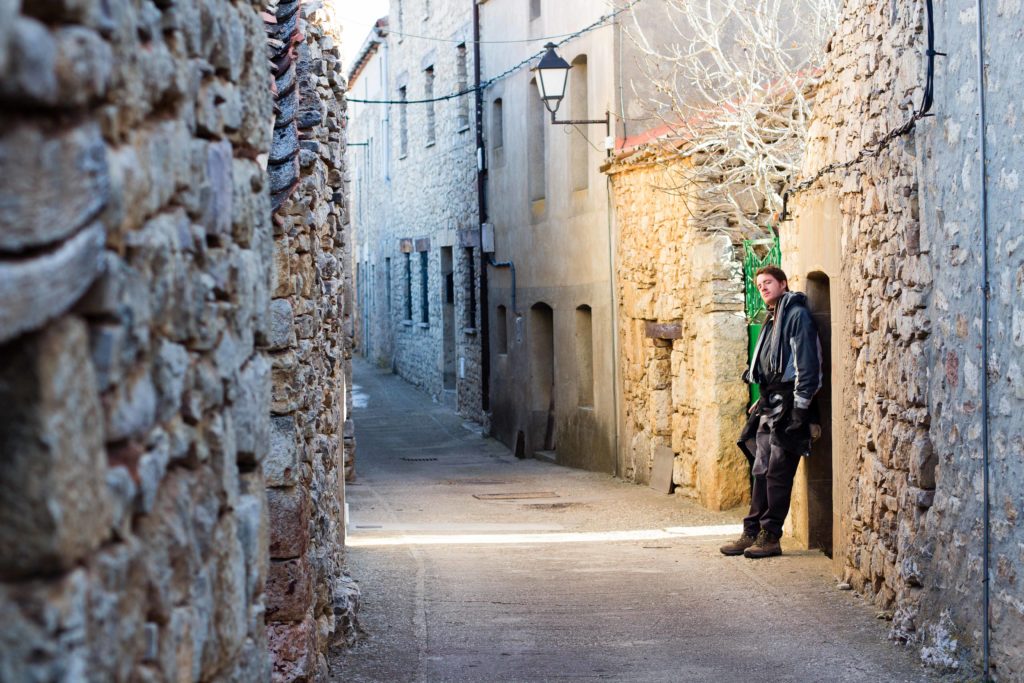
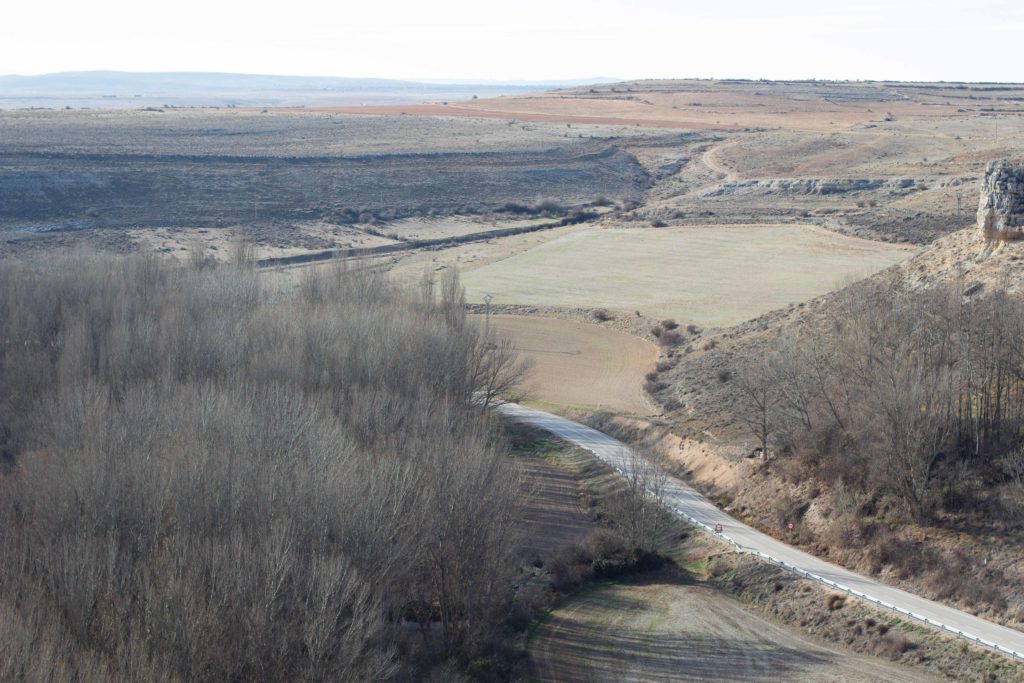
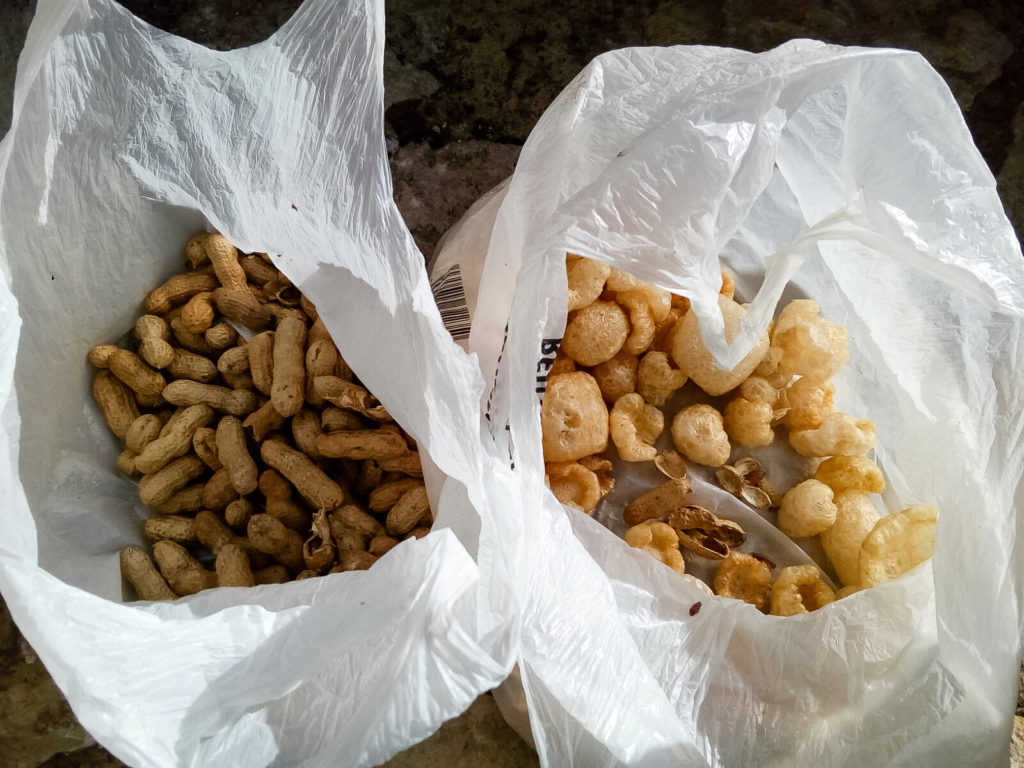
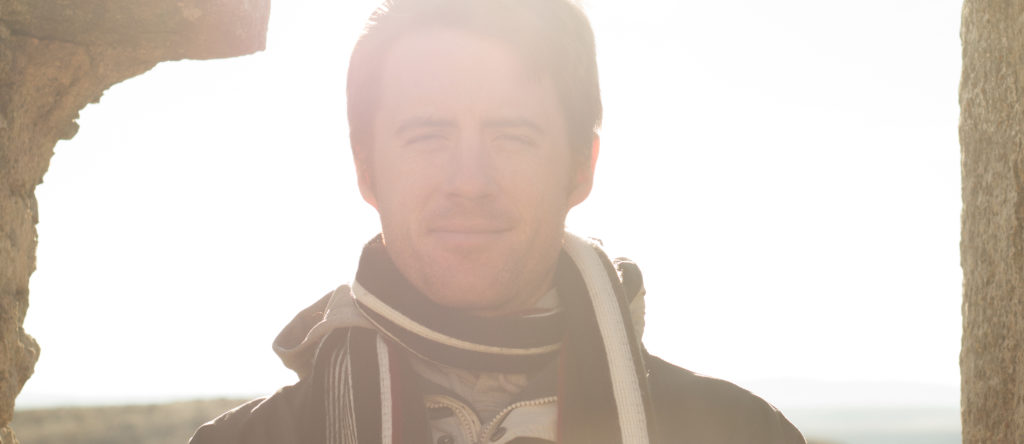
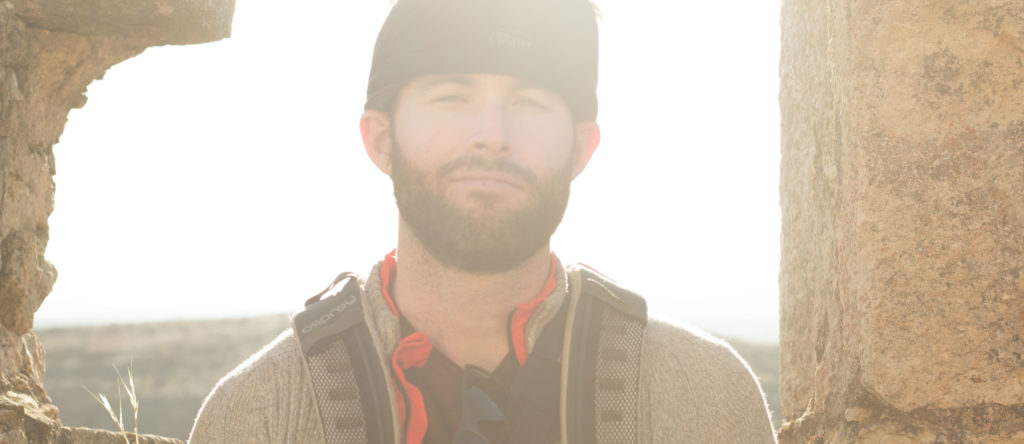
El Pueblo de Fantasmas
After a few hours of wandering through the arid landscape, we arrived at a large promontory erupting from the earth. Perched at the very top was what appeared to be clay and brick structures; a wall and an observation point. We had arrived at Rello. It was a strategic point which served as a stronghold for the border between the invading Arabs and defending Spanish empire. This was clear from the geography, the stronghold was perched between two cliffs and had a perfect view of any invaders approaching through the valley below.
We descended to the top of this abandoned pueblo and it felt as if we were entering a time machine to the 10th century. It was a zombie settlement – a ghost pueblo: crumbling ancient buildings lined the extremely narrow streets and the entire pueblo was encircled by a decaying medieval wall. We wandered around this derelict zone and met two elderly ladies and 5 cats who still live there. The only bar in town was closed for the winter. We ate our surprisingly delicious and filling meal of peanuts and pork rinds (eating them at the same time adds a nice level of saltiness and flavor to the bland peanuts) while absorbing as much sun as possible (I live in País Vasco which is known as one of the cloudiest and rainiest parts of the peninsula). After recharging our batteries with sun, salt, nuts and fried port, it was time to continue the walk back to Barahona.
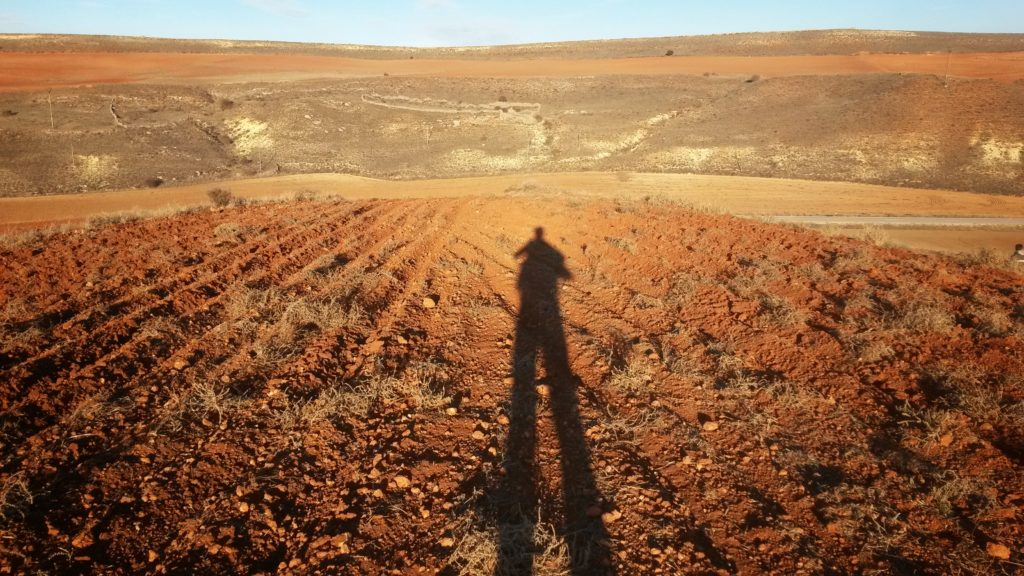
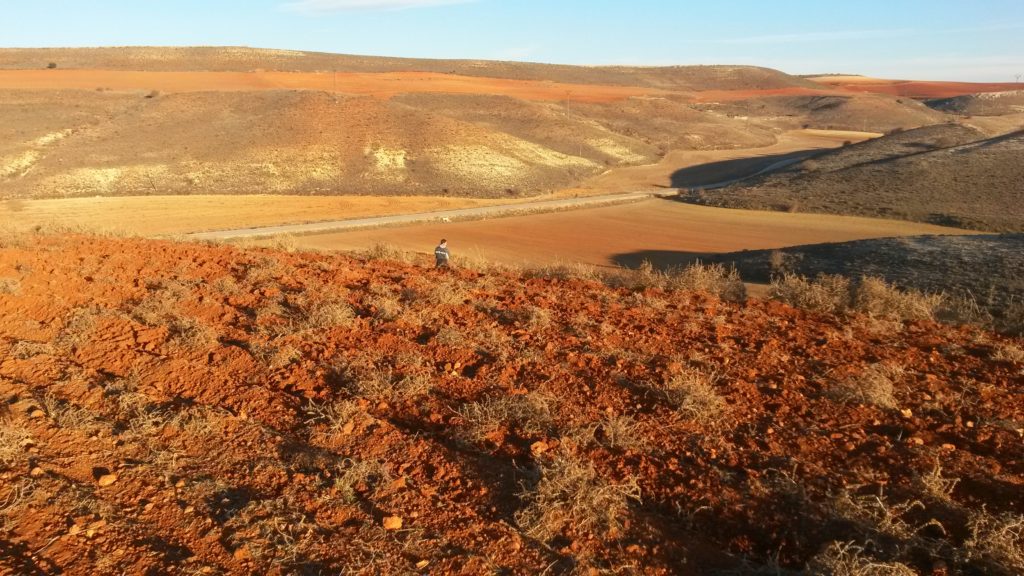
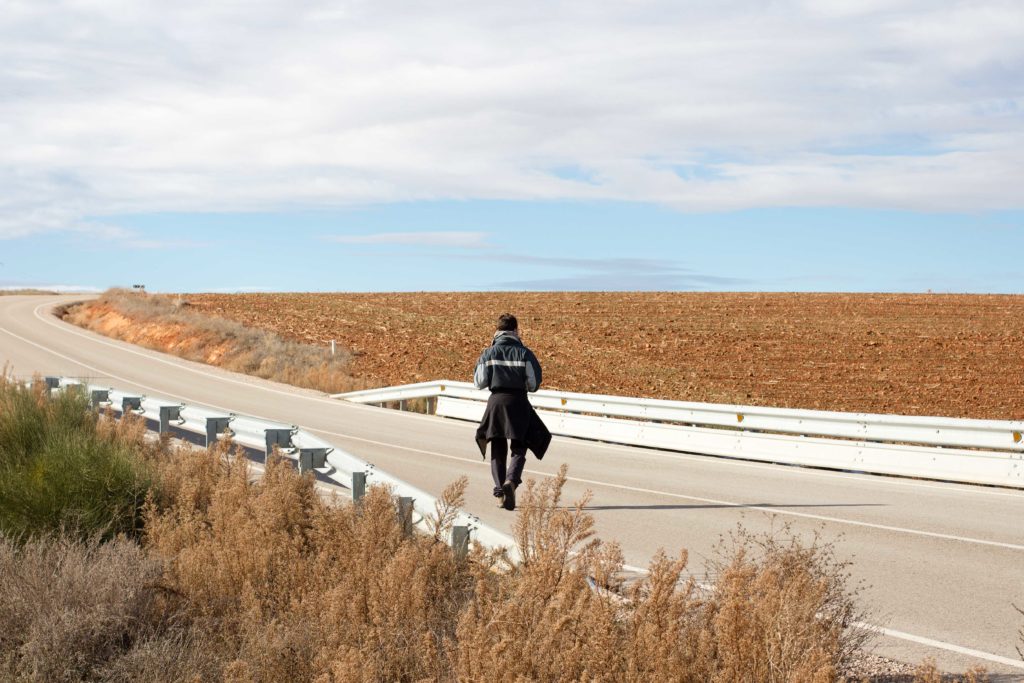
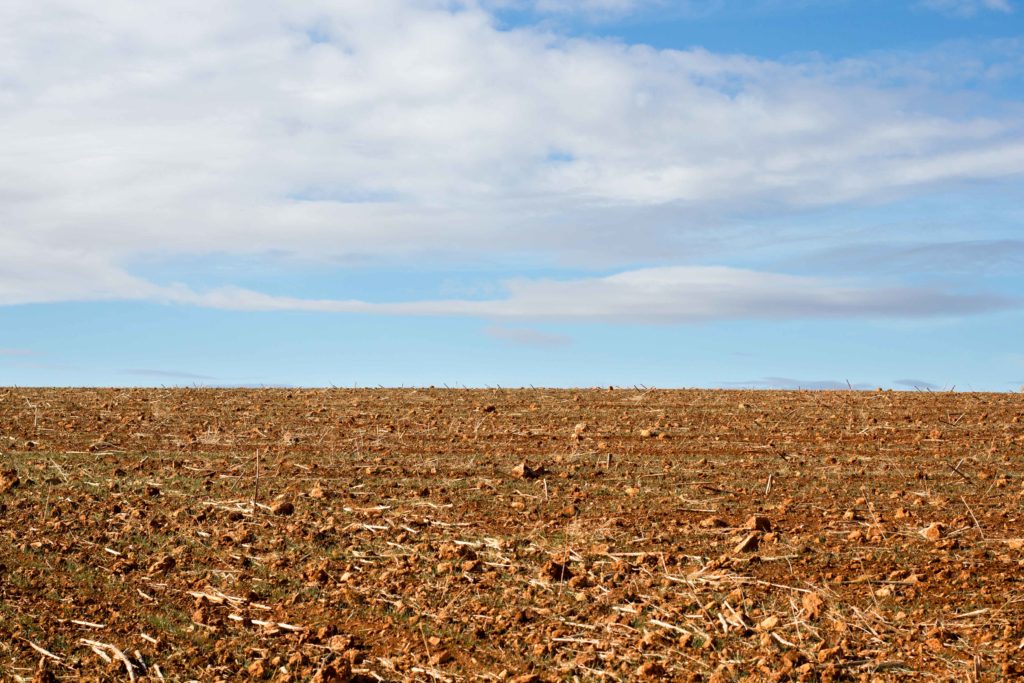
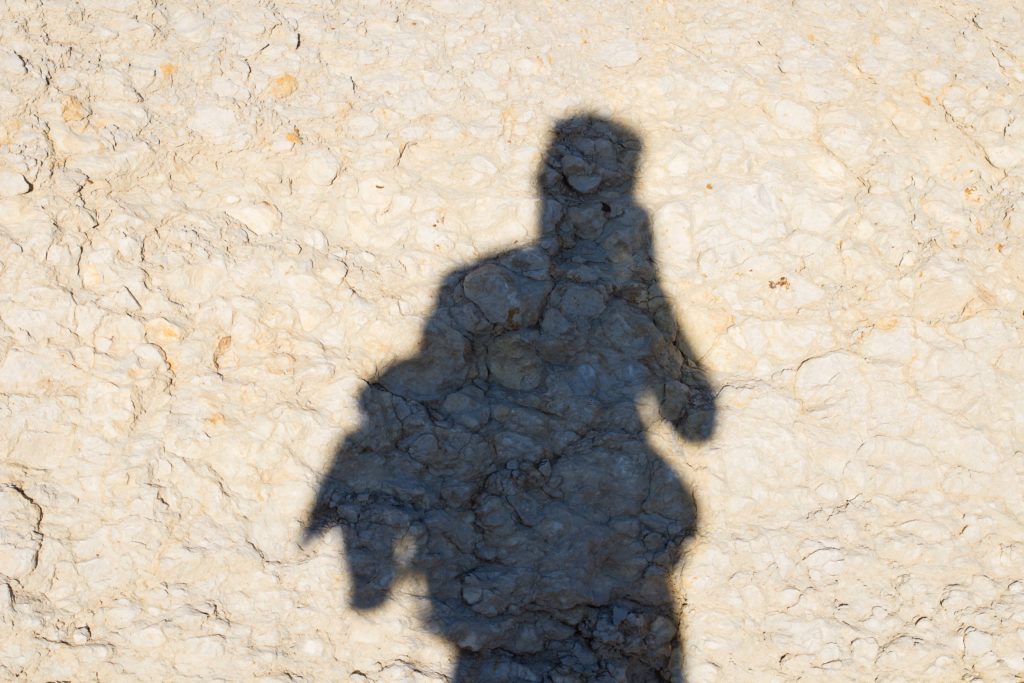
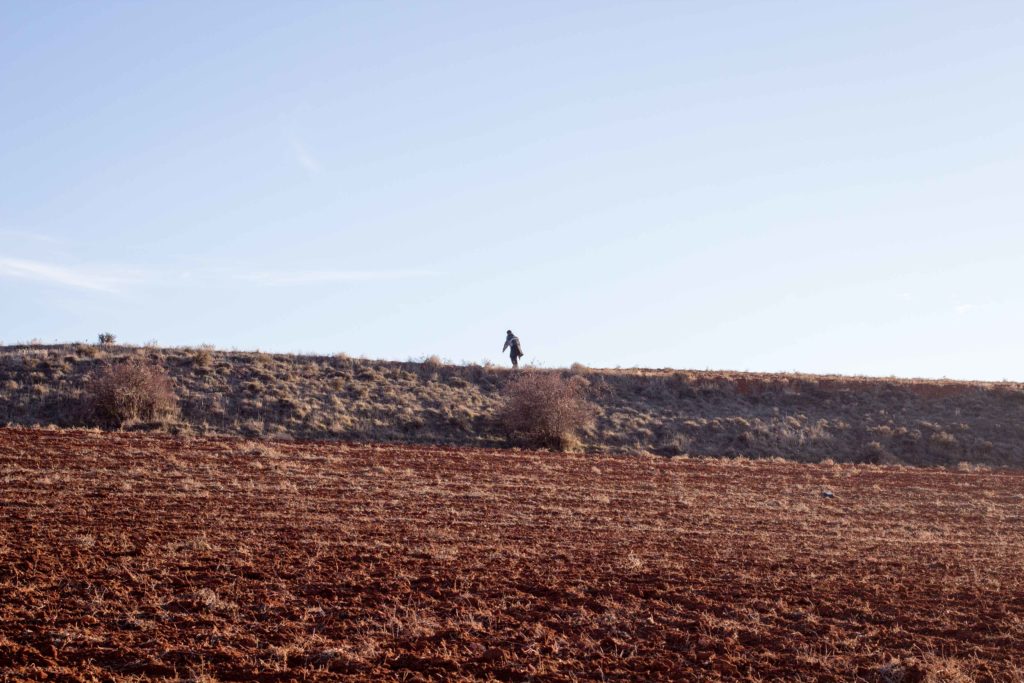
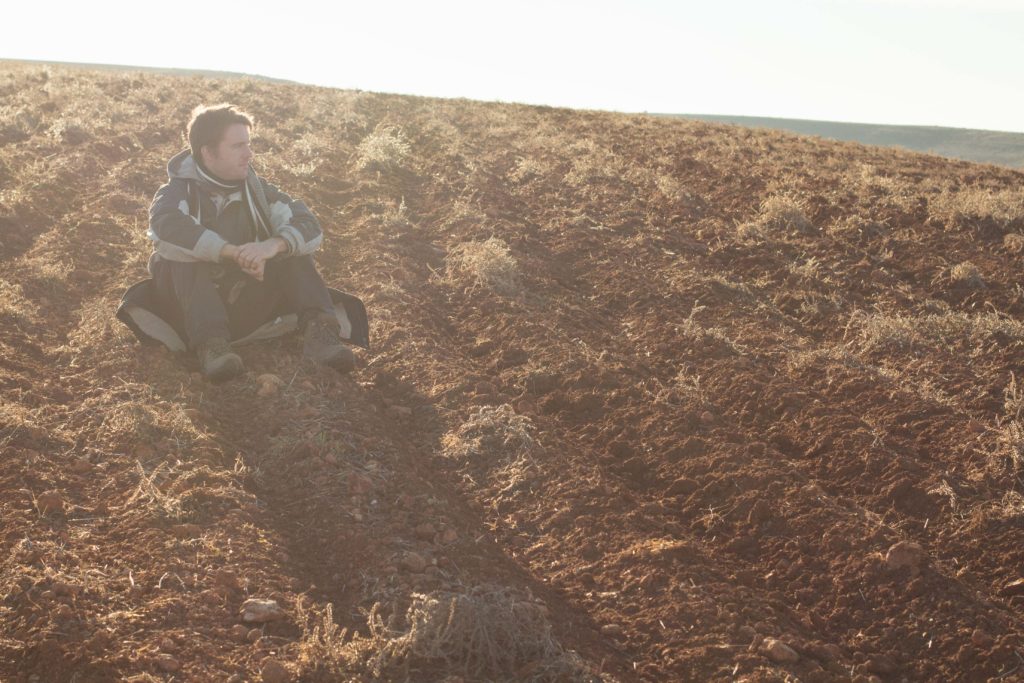
The sun lowered in the horizon as we backtracked through the sunburnt fields and empty roads of Soria. The golden rays of the sunshine saturated the desolate land with its glorious colors. We decided to trek through a patch of farmland and perch ourselves on an elevated plot of earth to think about life and contemplate the world. The silence was deafening.
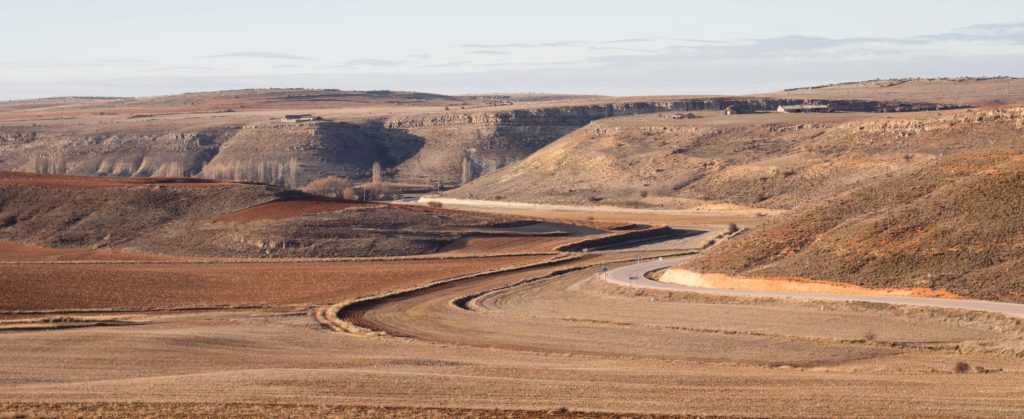
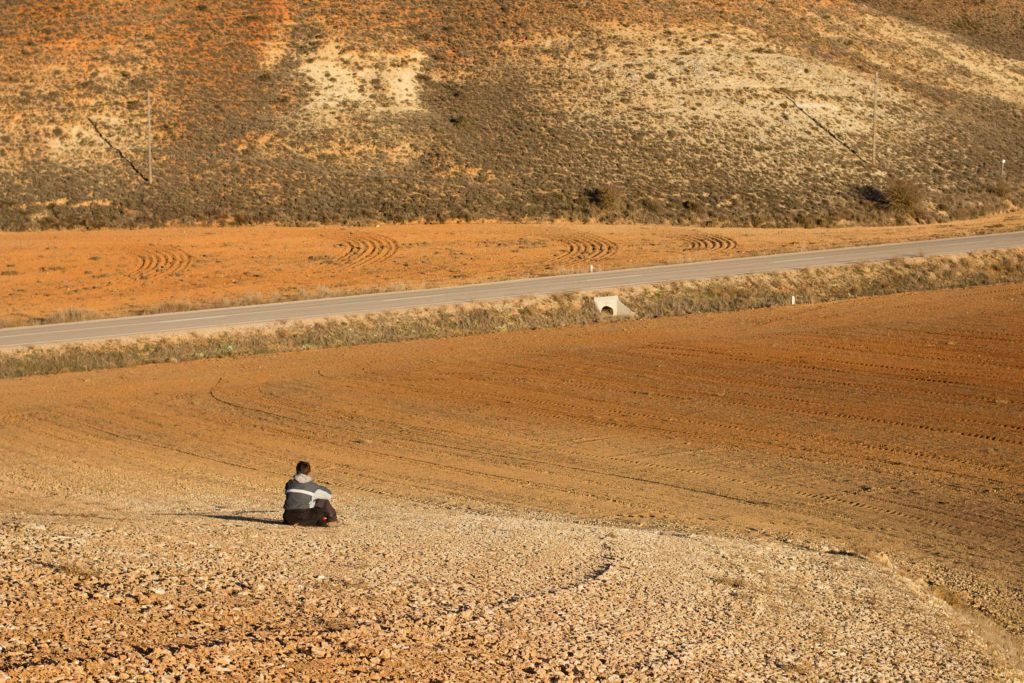
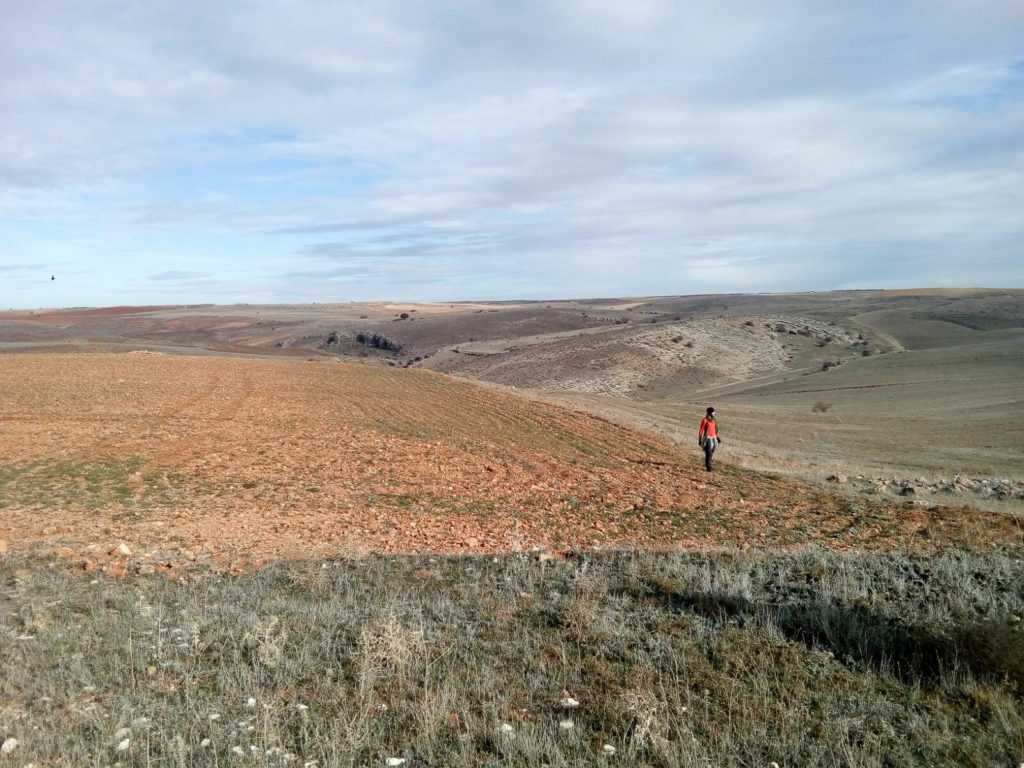
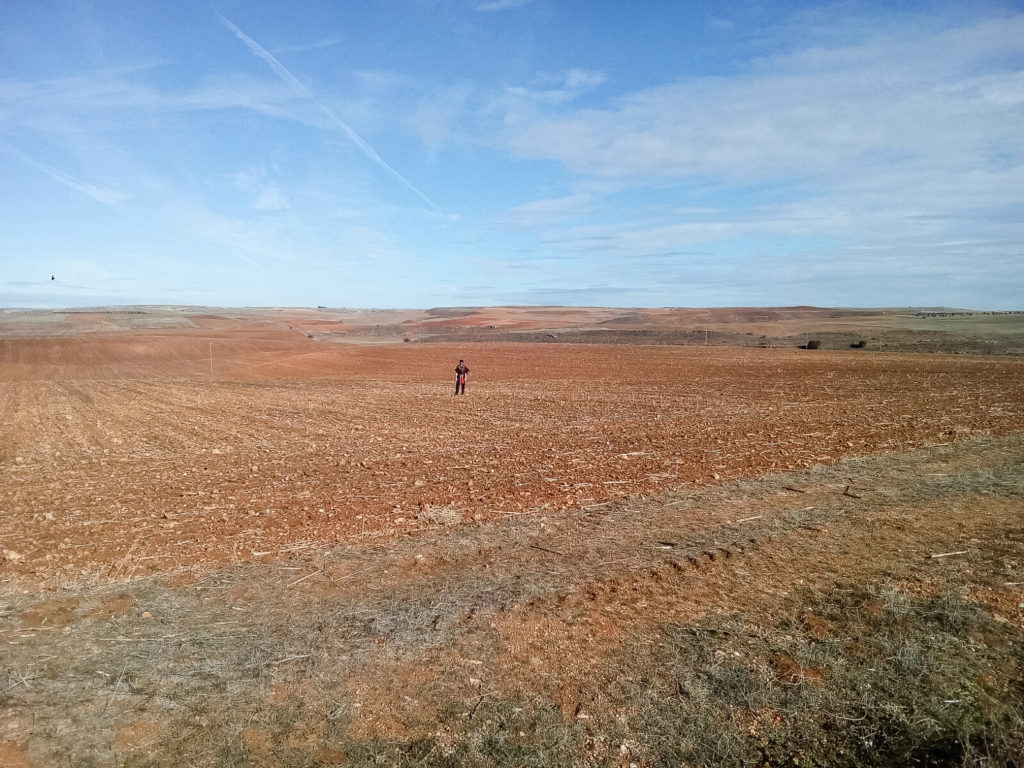
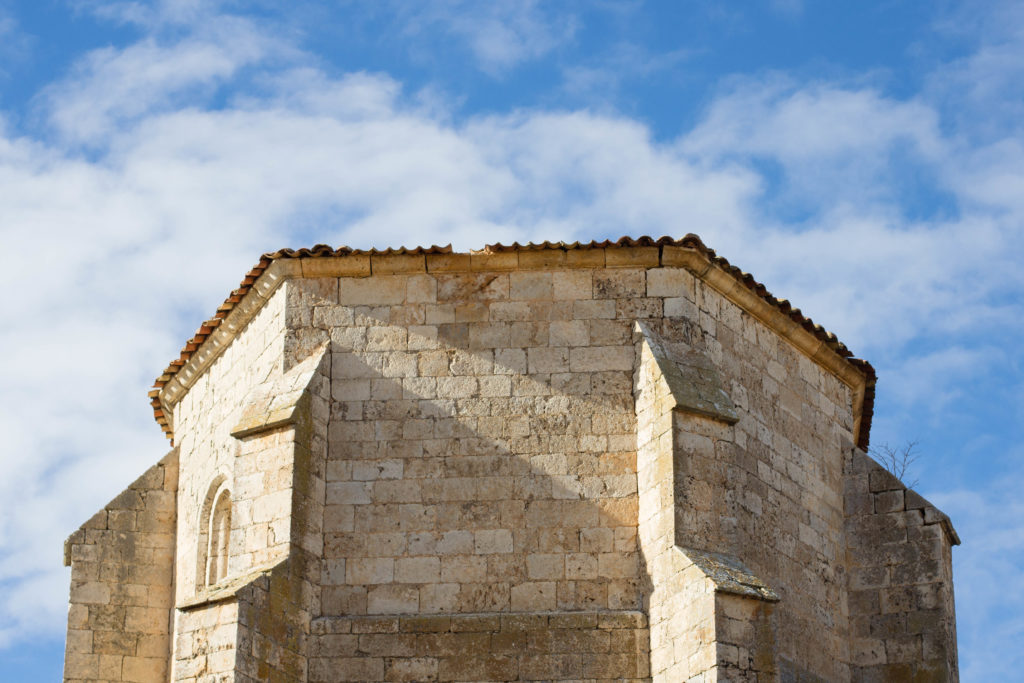
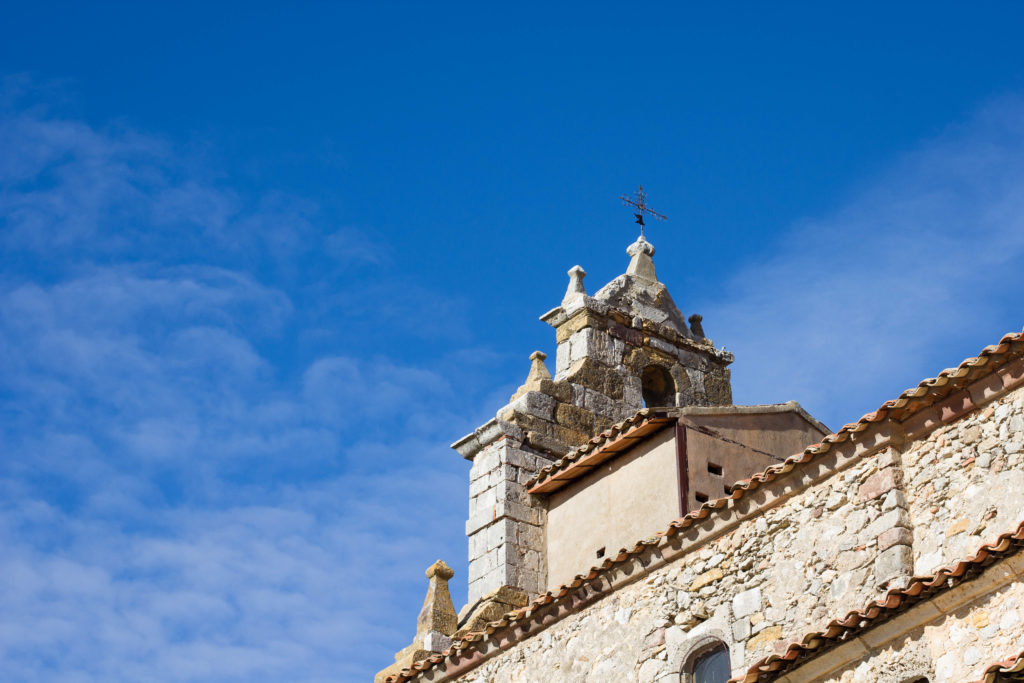
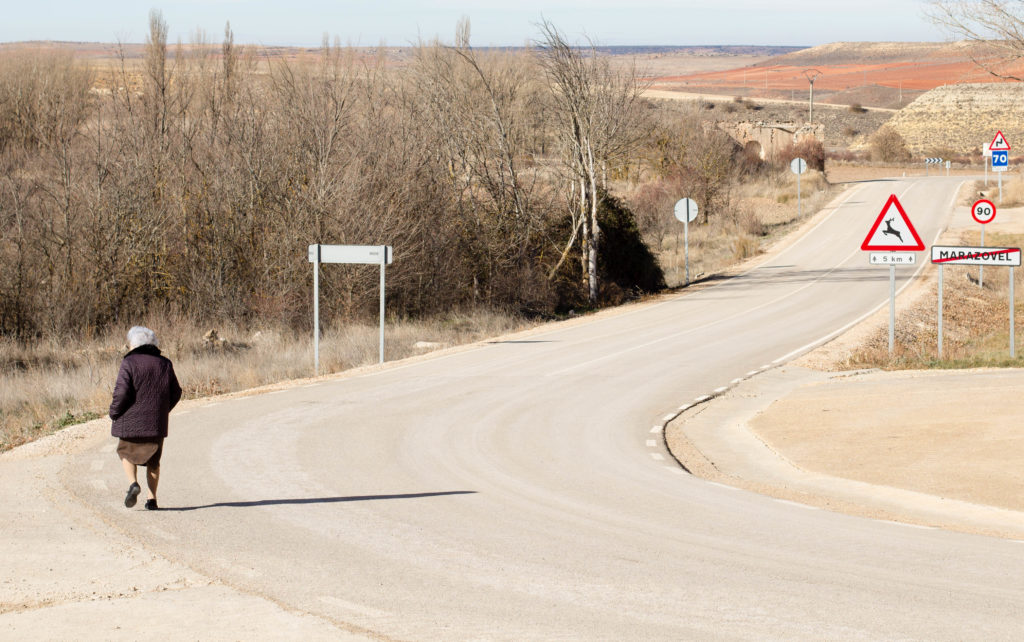
After paying our respect to the land and setting sun, we continued our journey and reached the halfway point of our return trip: the pueblo of Marazovel. Should we stop at the bar? We figured that we might as well see if anyone is there who could maybe give us a ride to the next pueblo as it was getting dark and we were a bit tired from the walk. At the entrance to the bar, there was a giant pile of logs and a medium-sized dog guarding the door. We peeked inside and saw 8-9 guys hanging out. Should we go in? Yeah, let’s grab a beer and see what happens. Matt stared down the dog for a good 30 seconds before he finally let us pass, giving us a nasty growl to show his disapproval of us foreigners.
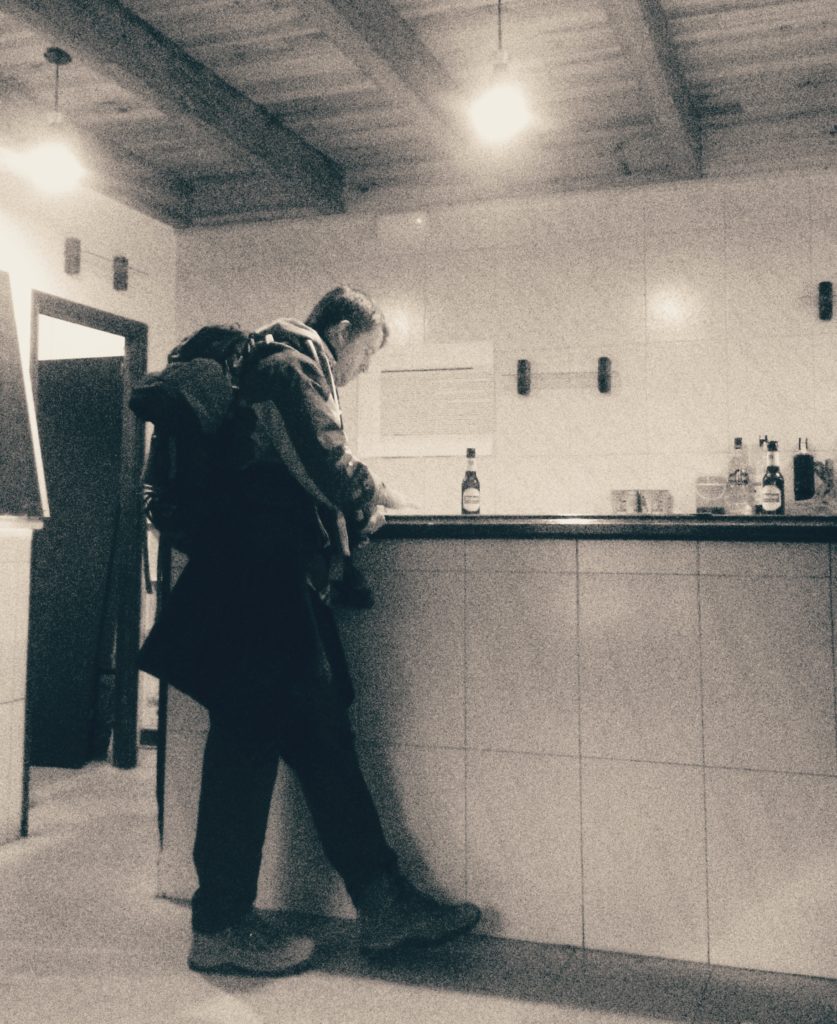
We walk into the bar and see about 10 guys that range in age from their 30’s to 60’s. They all have beer bellies, dirty clothes and weather-worn faces. Locals. The record player stops as they all turn their heads to see the spectacle of 2 bleary-eyed American travelers adorned in hiking gear wandering into their local watering hole. We nervously order a round of beers for ourselves and to break the ice I ask the group if there is a bus passing through town that will take us to the next pueblo. They chuckle and tell us there’s no bus and that it’s only a short walk away (6km). We chat a bit more and I get a bigger laugh out of them when I tell them that we came here to see the beautiful landscape because it’s so different than what we’re used to. The sun is still setting and I don’t want to miss any pictures so we pay for our beers and tell the crew that we had better get going before it gets too dark. Before we can finish our explanation, the bartender gives us a look and his eyes say it all: ‘you guys aren’t going anywhere’. He promptly opens up two more beers that someone had bought for us. Matt and I look at each other with a mix of apprehension and excitement. This is going to be interesting, we think to ourselves. We end up staying there for over 2 hours drinking beers and getting to know these friendly locals. Beers keep magically appearing in front of us before we even finish the current beer we’re working on.
“Que hacéis aqui?” What do you guys do here?
“Somos todos agricultores.” We’re all farmers.
These guys were FARMERS. You could tell that they worked hard, drank hard and knew the land well.
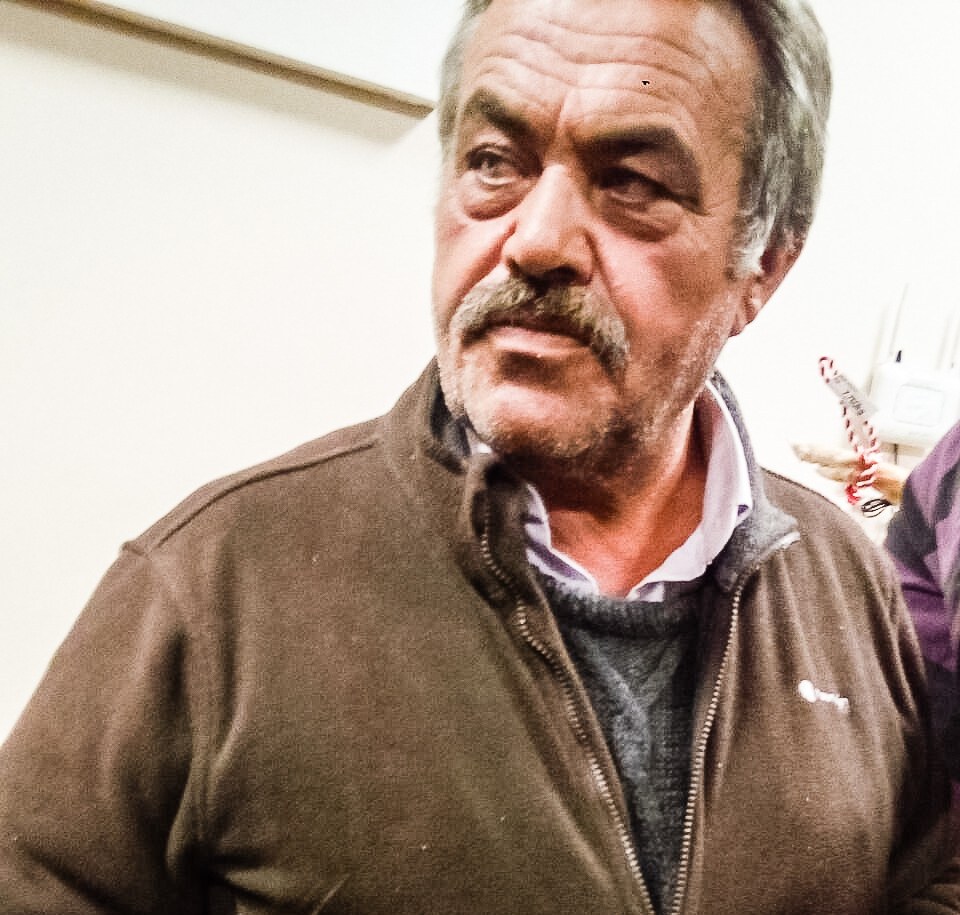
The leader of the group, Gonzalo, had a giant beer belly, a weather-worn leathery face and piercing blue eyes. He was very intense, boisterous and constantly cracking jokes. He was also the most outwardly intoxicated of the group. He kept repeating the same joke which received roaring laughs every time: “Error de la Máquina!” which literally means ‘Machine error’. Although it didn’t make much sense to us in the beginning, after the 5th repetition, we finally started to get it and it became funny to us as well. It’s basically a catch-all phrase for any sort of situation where you don’t know what to say….’Error de la Máquina!’ It could refer to an alcohol-induced verbal mistake, an opinion you disagree with or just something to yell when there is a silence between the conversation. This became our new anthem for the rest of the trip.
During the course of our unexpected happy hour with our new friends, We found out that the annual “light a giant bonfire, drunkenly set off firecrackers and then bbq a bunch of meat over the coals” tradition would be that night, in Barahona, the town we were staying in. “¡Hostia, no me jodas! Que suerte!” We had reached the point of no return on this journey immersive journey into the world of agricultores del pueblo: Naturally, we were in for the Bonfire/BBQ plan.
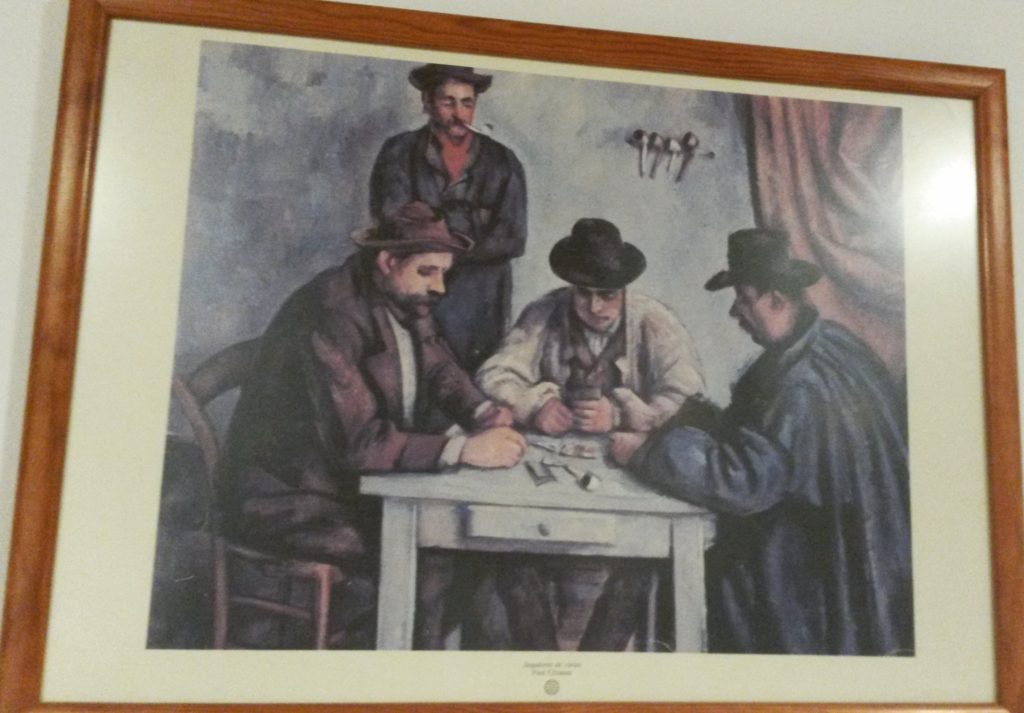
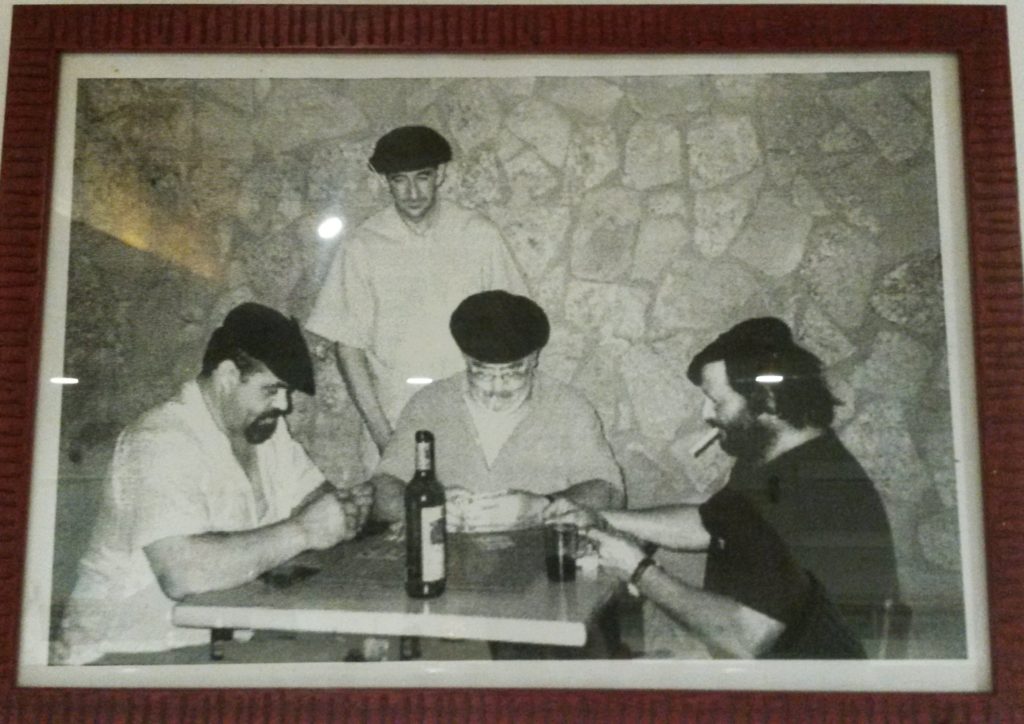
We hitched a ride back to town and spotted the giant fire on the side of the road. There were a few dozen people milling about: Old men, kids, families and everyone in between. People were hanging out, playing with fireworks, chucking more tree into the fire, drinking wine and finally grilling delicious meat. The typical meat of that region is cordero (lamb). It was inconceivably delicious; I asked if it was seasoned with anything and one of the young grill-masters told me that it was completely natural; they didn’t even add salt. The flavor is imparted from the meat itself, of course, but also from the type of tree that is burned.
We met quite a few people in their 30’s that grew up in the town but now live in a larger city. It’s basically impossible to stay in the pueblo unless you work as a farmer. With the constantly advancing state of agricultural technology, the amount of manpower required to farm the land is less and less; so there are fewer jobs. I was told that 50 years ago, there were 1,000 people that live in the town; currently, there are less than 50. Although many people move away, it was charming to see that they are still connecting to their roots and visit their childhood home to see the few remaining family members and participate in awesome traditions such as the ‘bonfire and grill meat’ fiesta.
Matt and I were a hit at this fiesta. We easily fell into the novelty role as 2 Americans who spoke decent Spanish and weren’t afraid to dive headfirst into this random pueblo’s party. This is a role we are both very familiar with, and to be honest, the excitement of it hasn’t grown old. Yes, it’s a bit tiresome to answer the same questions. Where are you from? Why did you move to Spain? Did you speak Spanish before coming here? When will you go back to America? The Ego part of my psyche enjoys the attention, the excitement, the genuine interest that people have in you. You feel like an exotic creature, a specimen, an important person. People are fascinated and want to talk to you. I suppose that it will eventually get old (although Matt has told me it still hasn’t gotten old for him after 5 years).
That night, I met Alfonso, a 2 meter tall beast of a man, who could easily have been a professional tight end in the NFL with proper training at a young age. Each of his fingers was like 3 of mine. We later found out that he’s a farmer who’s lived here all his life and is a one-man agricultural operation. A gregarious host and the unofficial organizer/mayor/ambassador of the region, he kept offering me drinks, demanding that I eat more food and wanted to tell me every bit of history about the town. A natural leader and tour-guide, his pride in his home region exuded from his core. Despite being in his mid-50’s he acted like a big kid; a constant smile on his face, very sociable and a genuinely positive and happy attitude. (I later realized that it wasn’t just the wine, he acts like this all the time). At the end of the night, he offered to drive us to our next destination the following day. He spoke extremely fast in heavily accented ‘pueblo’ Castellano, so I think there was a bit of a misunderstanding about the nature of his offer: I assumed that he was already driving to that town which is why he offered to take us, but it turns out it wasn’t exactly the case.
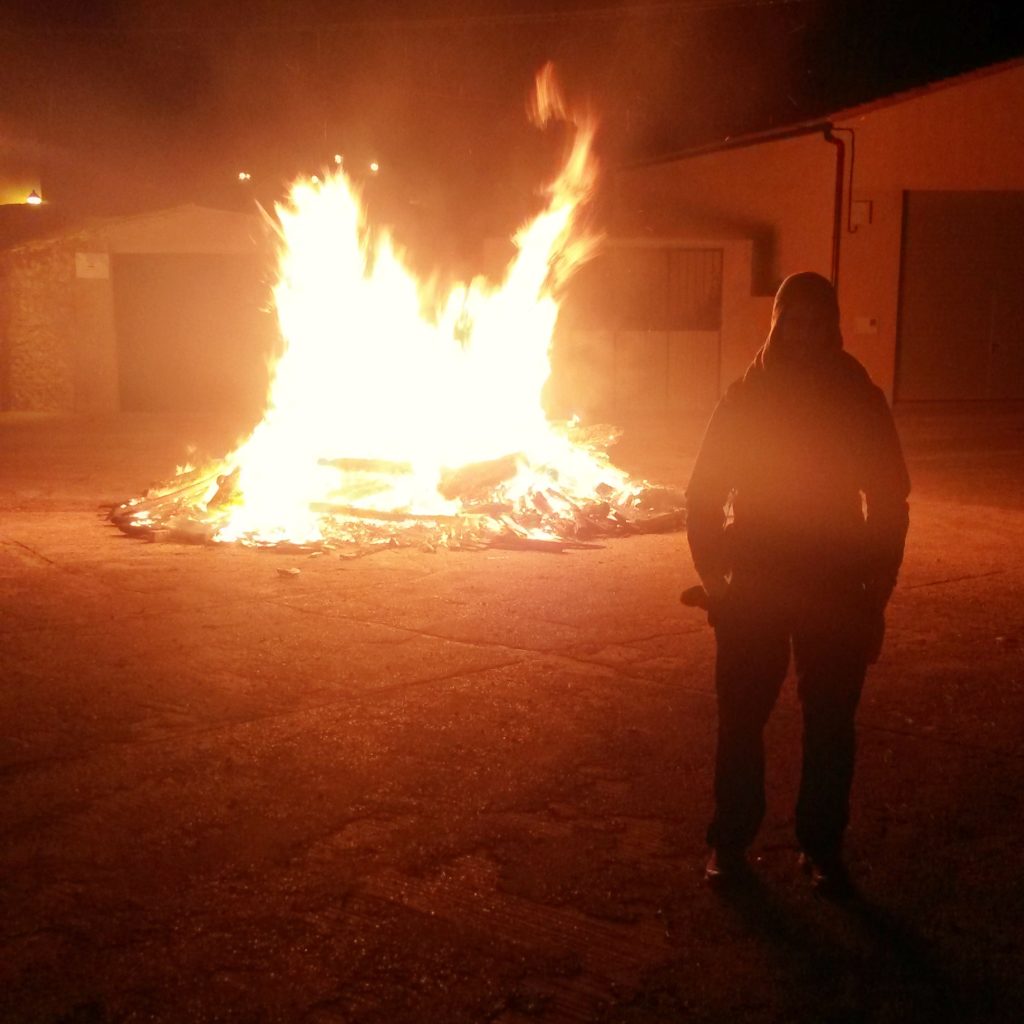
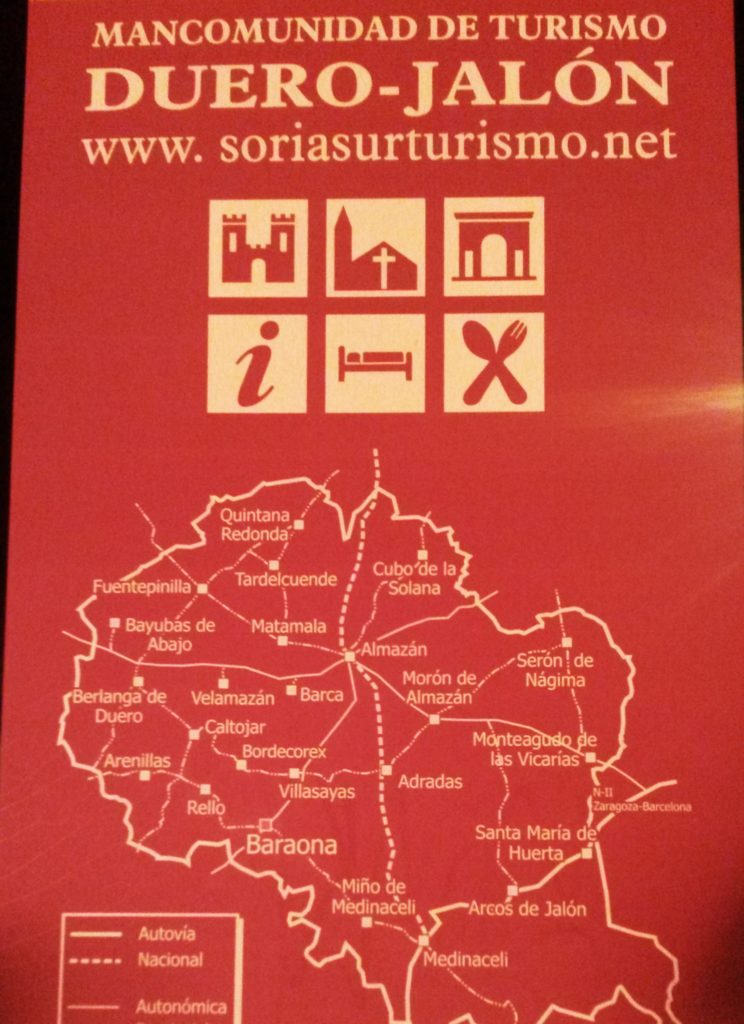
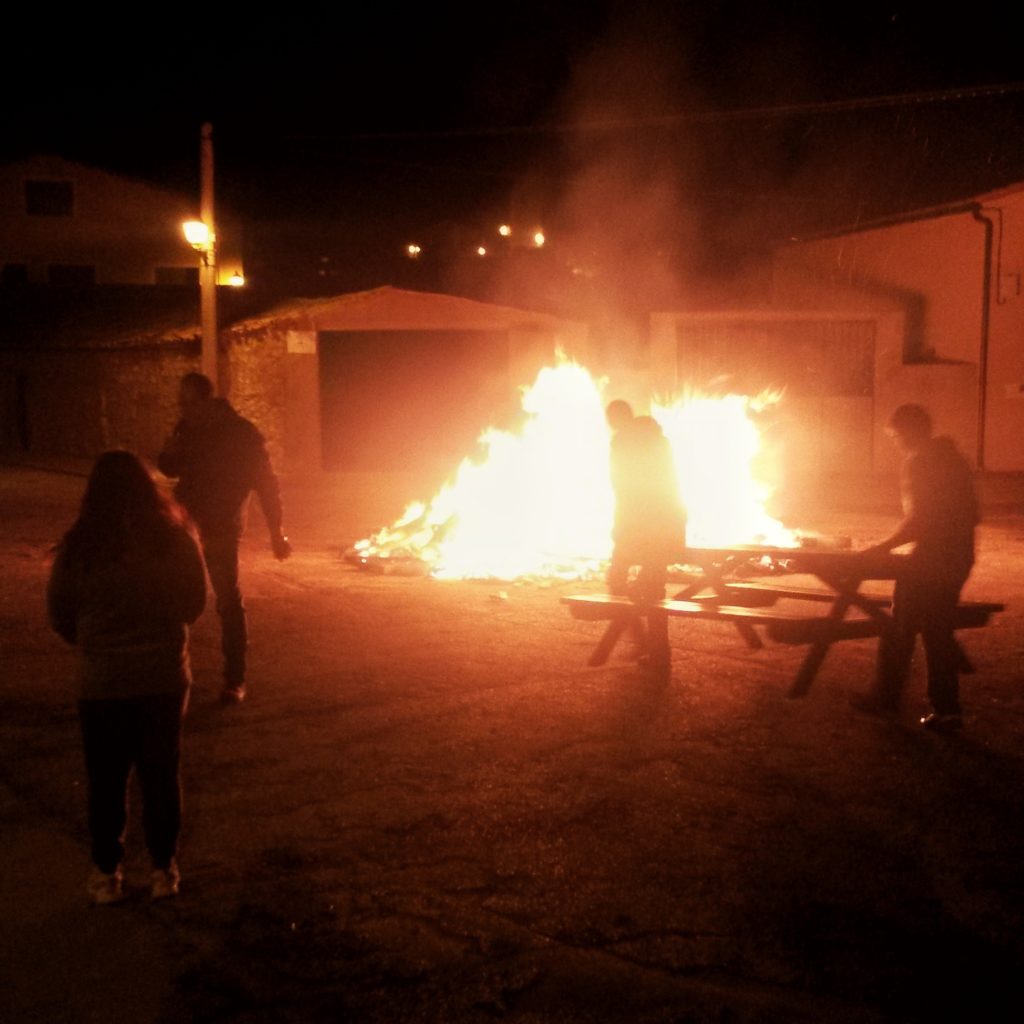
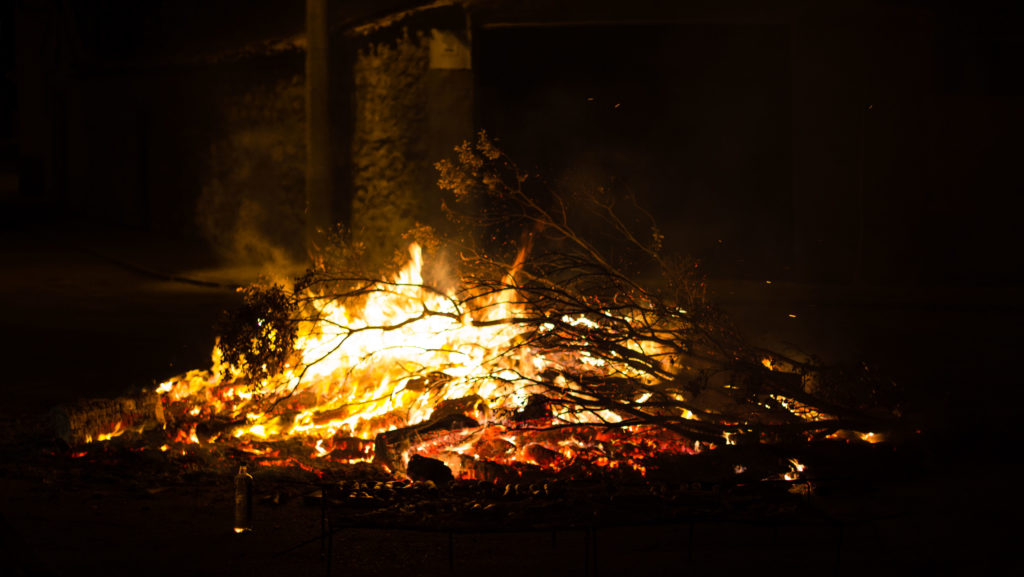
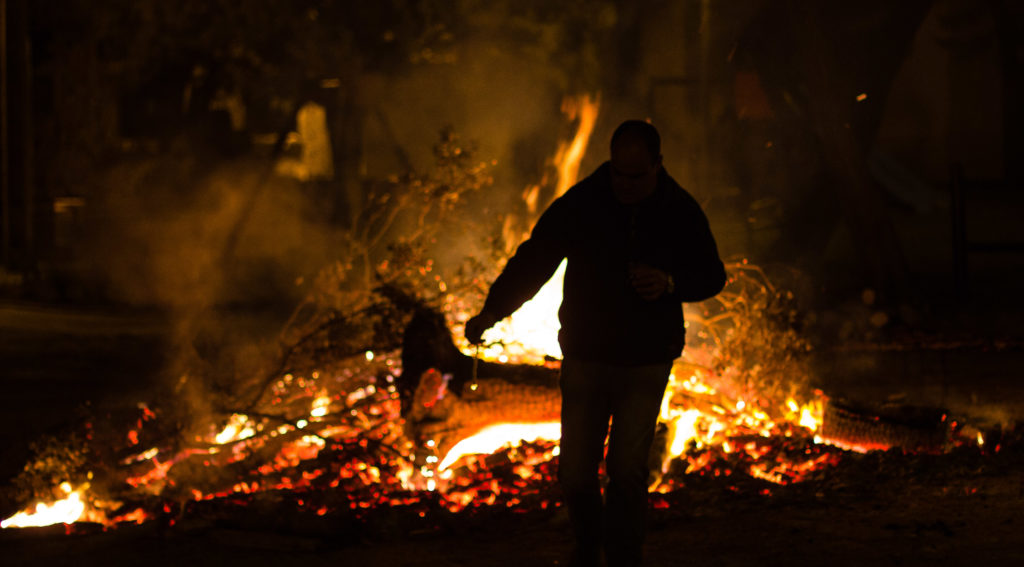
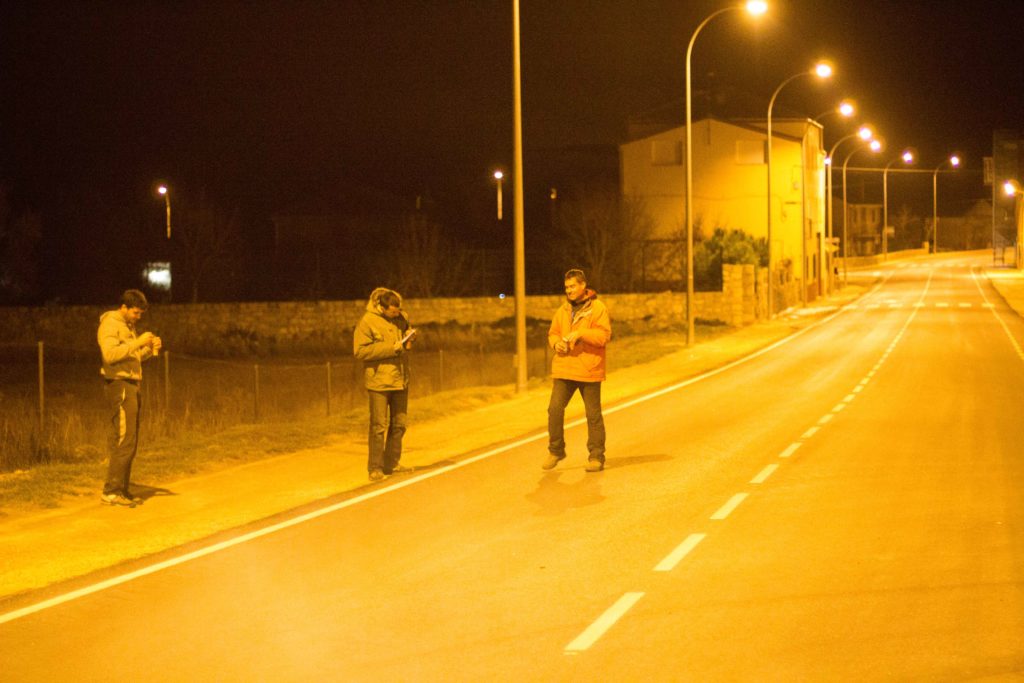
At 9AM the next day, Matt and I rendezvous for some breakfast in the hostel and start to formulate our plan for the day. The original idea was to walk 28 km to our next destination, the pueblo of Medinaceli. After the unexpected fiesta the night before, the idea of walking nearly 30 km with all our bags was not exactly appetizing. I mention to Matt that Alfonso might be driving us to our next destination of this morning and that we might be able to hitch a ride. I text Alfonso and in 5 minutes, he shows up at the bar and says ‘vamos’! Turns out, he wasn’t already going to our town; he was offering to go out of his way to drive us there and wanted to show us some sights on the way. ¡Que majo!
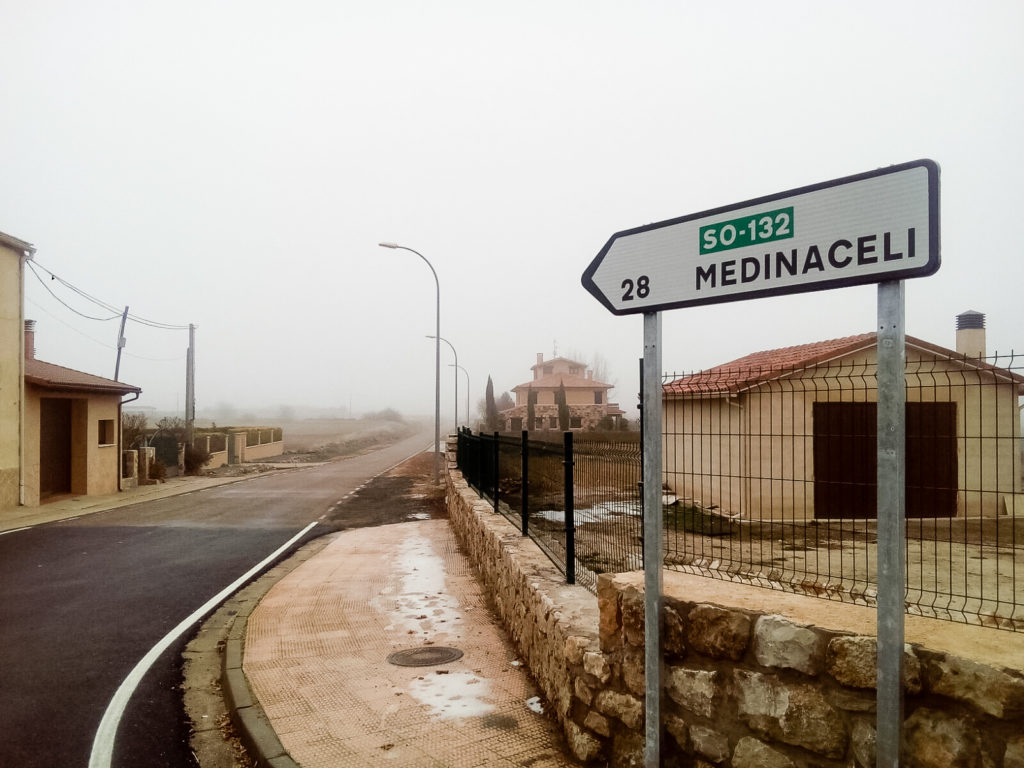
We spend the entire day with Alfonso and we make 4-5 stops along the way, seeing ruins, forgotten pueblos, traditional structures where shepherds stored their animals and a life-sized replica of a wooly mammoth (typical of that region during the ice age). He talks constantly and is filled with (mostly) interesting information. He knows everything about the land, the animals, the history and the environment. He doesn’t fit the stereotype of the uneducated country farmer; he’s extremely knowledgeable about science and uses the latest technology to tend to his crops. He’s a one-man operation, he works the land himself and has been doing it since he was 12 years old. A fascinating guy.
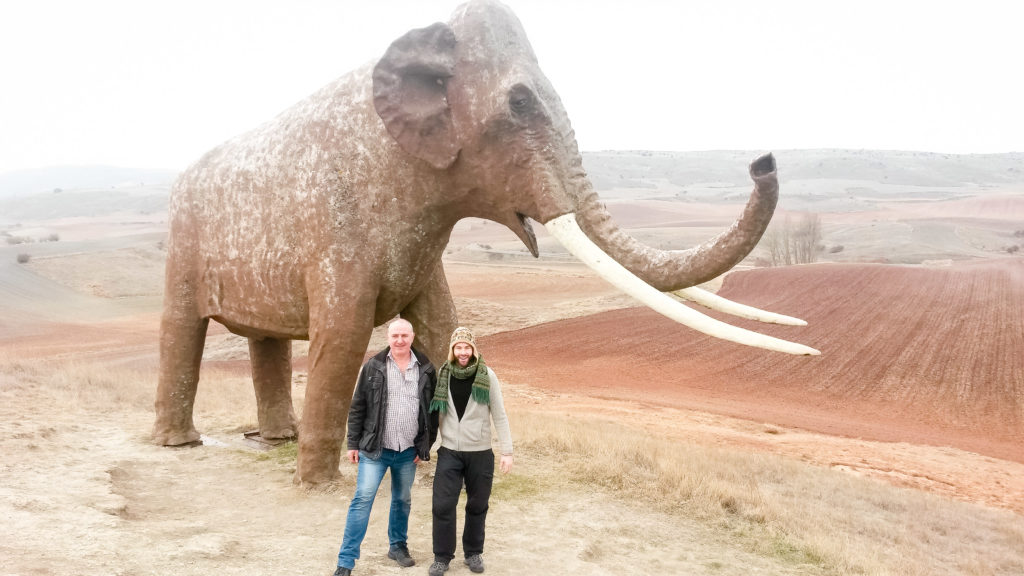
Some noteworthy tidbits from Alfonso.
- In most pueblos, there is usually a system of co-op bar. Everyone has access to the keys and when someone wants to go in for a drink, they simply open up the bar, pour themselves drinks and keep track of what was consumed.
- Every pueblo has its share of drama. We told Alfonso about our experiences with Señor ‘Error de la Máquina’ and he promptly told us that he doesn’t think highly of him after he refused to pay a debt for a tractor. When people stop being nice and start getting real: Real world, Barahona.
- Alfonso has a young son – I asked him if he expected his son to continue the legacy of farming. Alfonso said that he won’t force his son into farming, that he can choose his own destiny, but the only thing he will ask is that he doesn’t sell the land.
- Alfonso opined about the benefits of living in a small community; whenever anyone has a problem with their equipment, they can usually rely on each other for help.
The improvised whirlwind tour continued until we finally arrived at our destination, Medinaceli. This was a much more popular tourist destination, filled with museums, Roman ruins and art galleries. It was crawling with tourists enjoying the long weekend. At this point, we had hung out with Alfonso for about 5 hours straight, constantly chatting in Spanish, being inundated with new information and visiting what seemed like every pueblo and point of interest in the entire region. I was drained – but Alfonso had no plans for stopping. We went to not 1 but 2 museums in Medinaceli where Alfonso continued feeding us interesting anecdotes about all the exhibits and artifacts. I was going on 4 hours of sleep (I woke up early to attempt some sunrise shots, only to find the entire world engulfed in a deep blanket of fog) and hadn’t eaten since morning – I wasn’t sure how much more I could take. Luckily, it was around 2 o’clock and in Spain, that means it’s time for una comida (lunch)! We found a local restaurant offering a Menu del Dia – a brilliant system where you get 2 main courses, wine or water and a dessert for one reasonable price. The food and wine are always plentiful for a menu del dia, and it’s easy to order…you just need to decide amongst a few options for each course and then you can relax. After waiting for an hour to be seated we finally ate! At this point, I was ready for a siesta….but once again, Alfonso had no plans for stopping.
Side note: In Spain, it’s hard to leave people once you’re hanging out, especially if you’re out with a group of people. “One more drink! Don’t go! It’s early!” You then have to say goodbye to every single person. It’s an ordeal. I typically just yell “¡Me Voy!”, give a wave to everyone and run away. The first couple of months here, I would just throw a smoke bomb and disappear – but when I learned it is very maleducado (rude) to do that, I had to change my ways.
Anyway, with Alfonso it was no different, after 10 minutes of insisting, he finally accepted that I wouldn’t be joining him for more tourist activities after lunch. Matt, on the other hand, has more stamina than me (he also slept more) and decided to continue the adventure. I retired to our surprisingly nice hotel room and zoned out watching horrible Spanish knockoffs of Jerry Springer and reality TV dating shows.
An hour later I get a whatsapp from Matt: “This fucking guy is driving me across Aragon right now to show me a village”. I was so happy I quit early, I would have been in tears if I continued the pueblo death march. Apparently, Señor Loco Alfonso had driven Matt to another province of Spain, about an hour away to show him a village with a famous castle. By then, it was dark, so they couldn’t see much. Alfonso asked some locals how to find the castle and they gave him a funny luck and said “Pues, por ahi pero no se ve nada.” (Over there somewhere but you can’t see anything.) After giving a cursory glance to the castle, Matt and Alfonso retreated to the van to returned back to the pueblo. At this point, Matt was falling asleep in the car. There was finally a point of silence in the conversation and Matt started to drift off to sleep. He was nearly dreaming when he hears a voice bark “MATT, TIENES HERMANOS?!” The unstoppable force of Alfonso continued. They finally reached our hotel and Matt thought he was off the hook. Nope. “Pues, vamos a tomar algo en este bar.” (Let’s grab a drink in this bar). They go to the hotel bar and Matt orders a Gatorade and Alfonso a coke. A nice nightcap for the wild day. After 10 minutes of mindless chatting, Matt tries to pay for the drinks but Alfonso says, “Tomamos otro” (let’s have another round). They’re drinking coke and Gatorade at this point, so Matt chuckles, thinking it’s a joke. Nope. Alfonso orders another round as if they were beers. Matt stares into the abyss, unbelievable drained and exhausted and utterly stupefied as to why Alfonso won’t let him go. Alfonso, helluva nice guy, super friendly but just a bit pesado in the end. Until next time, buddy.
That sums up the most interesting parts of the trip. The next day consisted of several buses to get back to our respective homes in Logroño and Bilbao. After eating meat and potatoes for every meal, we both vowed to go on a vegetable cleanse for the next few weeks in order to detox. It was a whirlwind adventure, a captivating journey into the Spanish heartland where we confronted the dichotomy of country living; extreme isolation of living in a depopulated rural area and the basic human need of tight-knit communal revelry.
